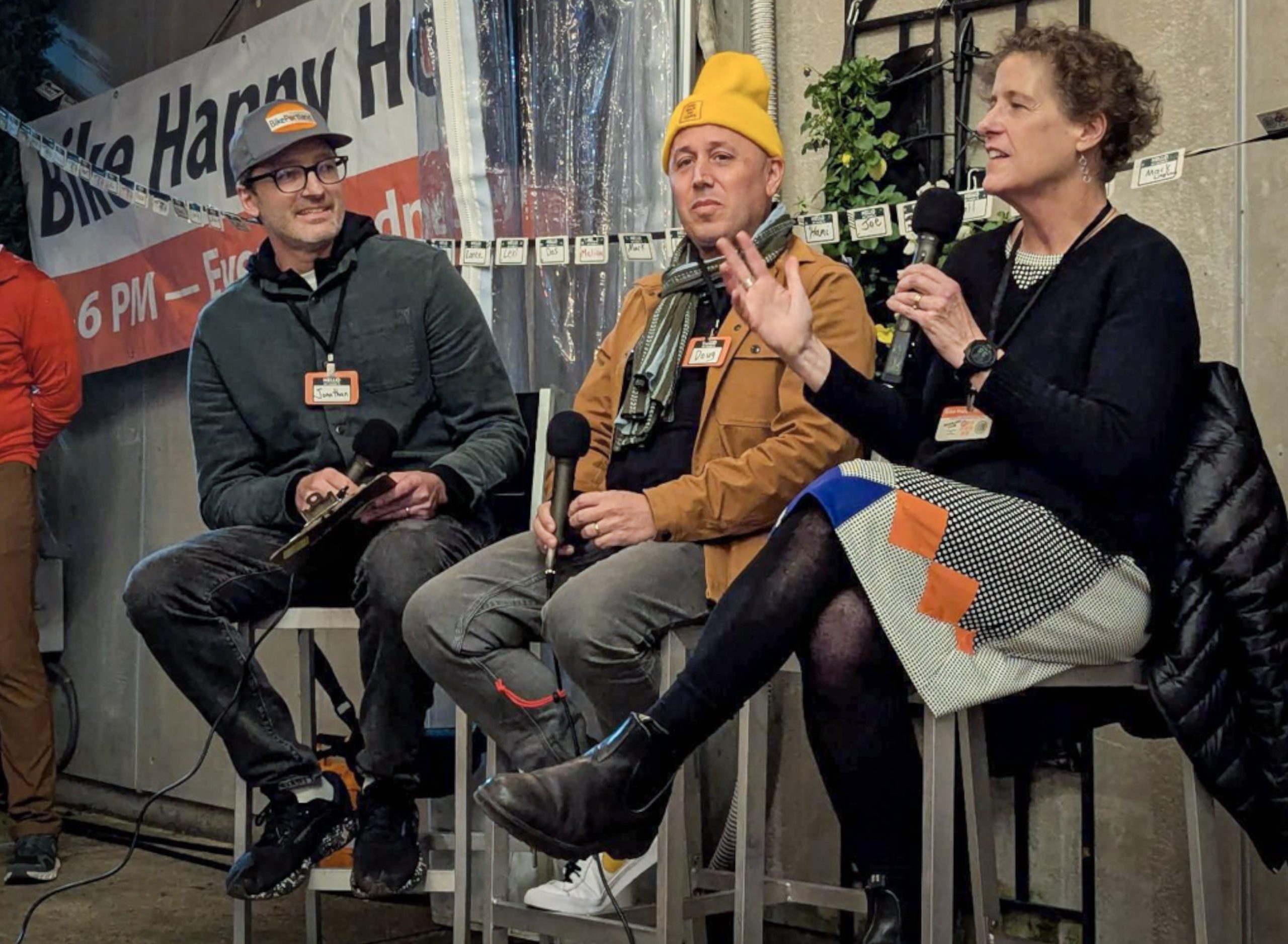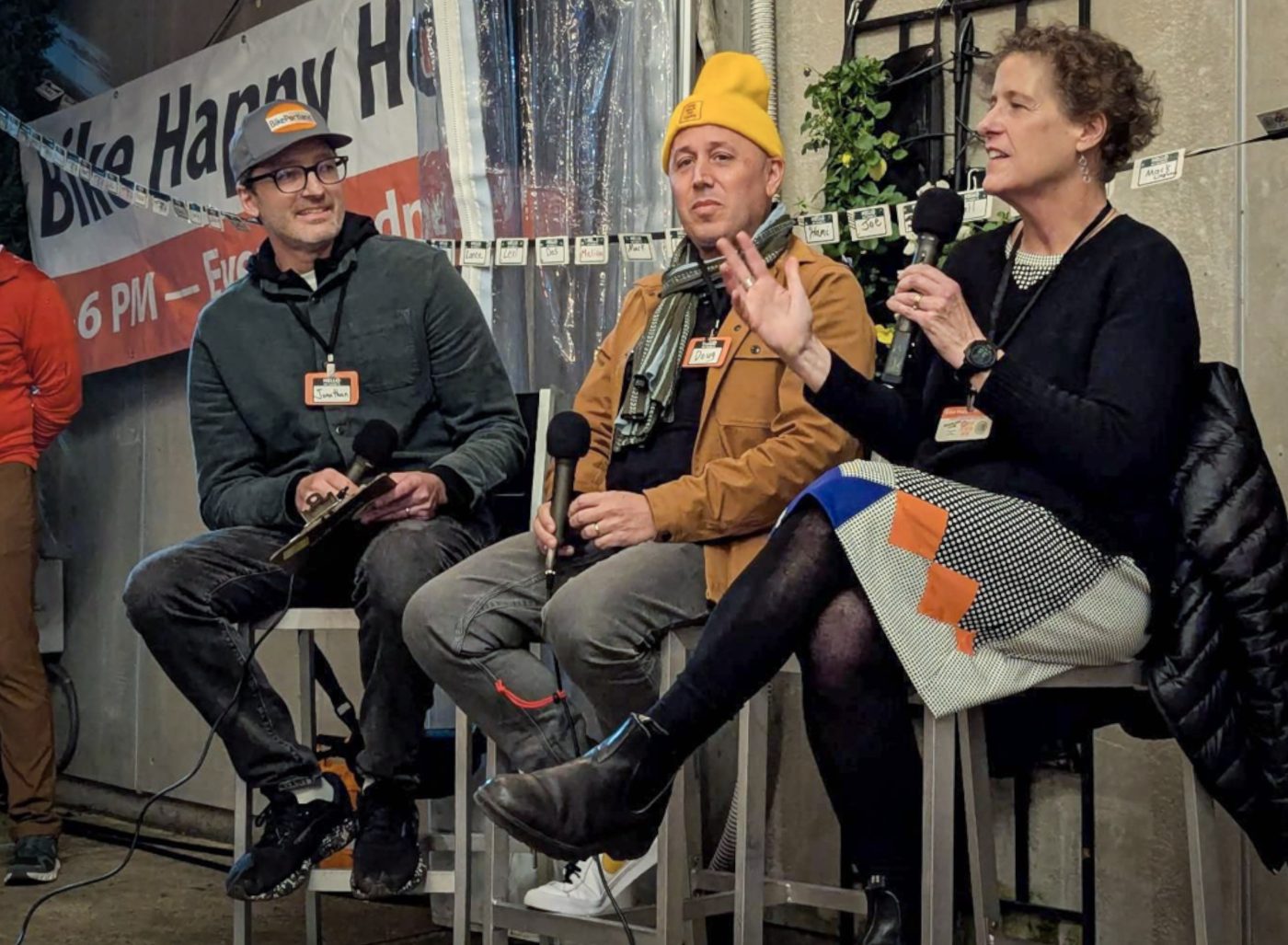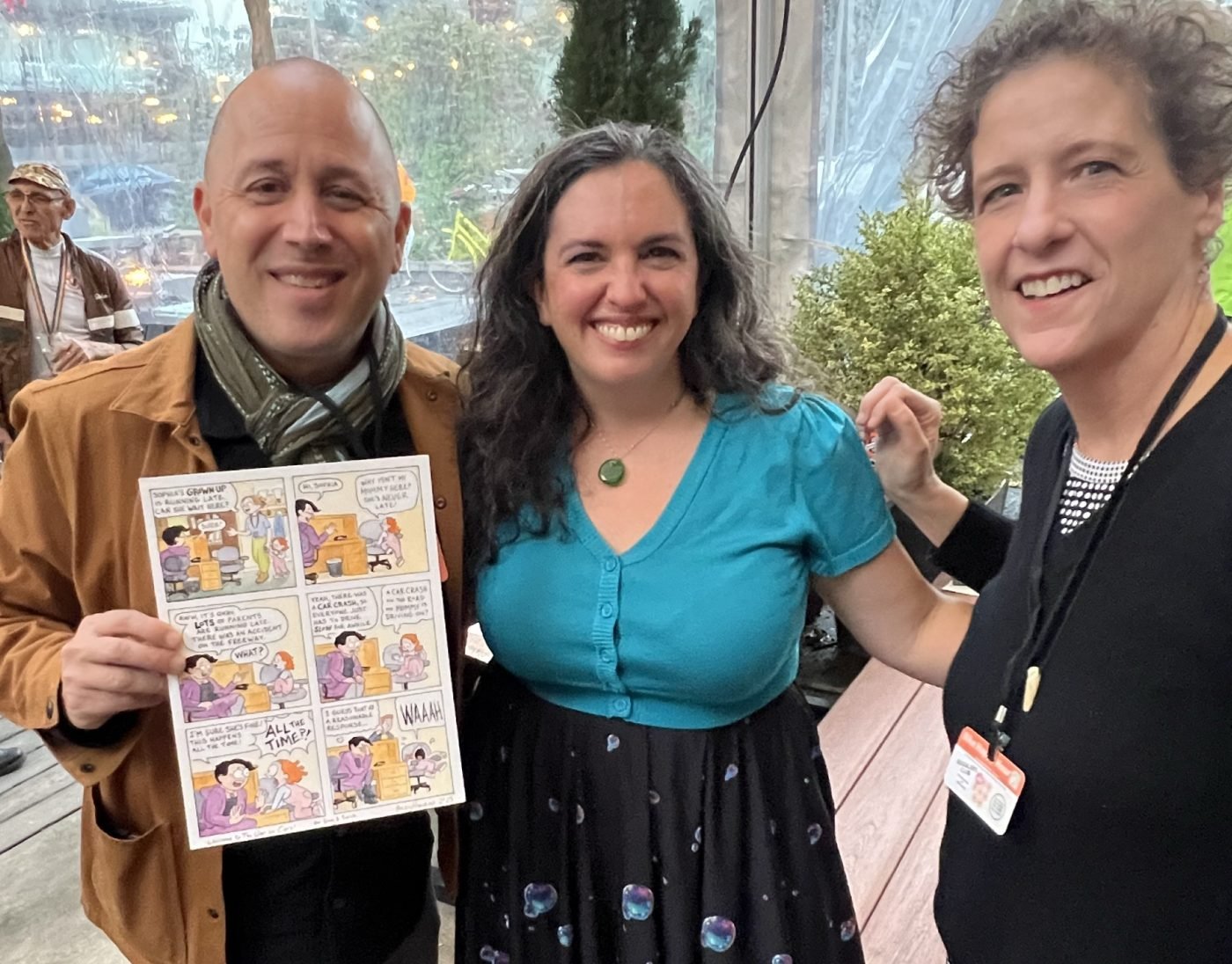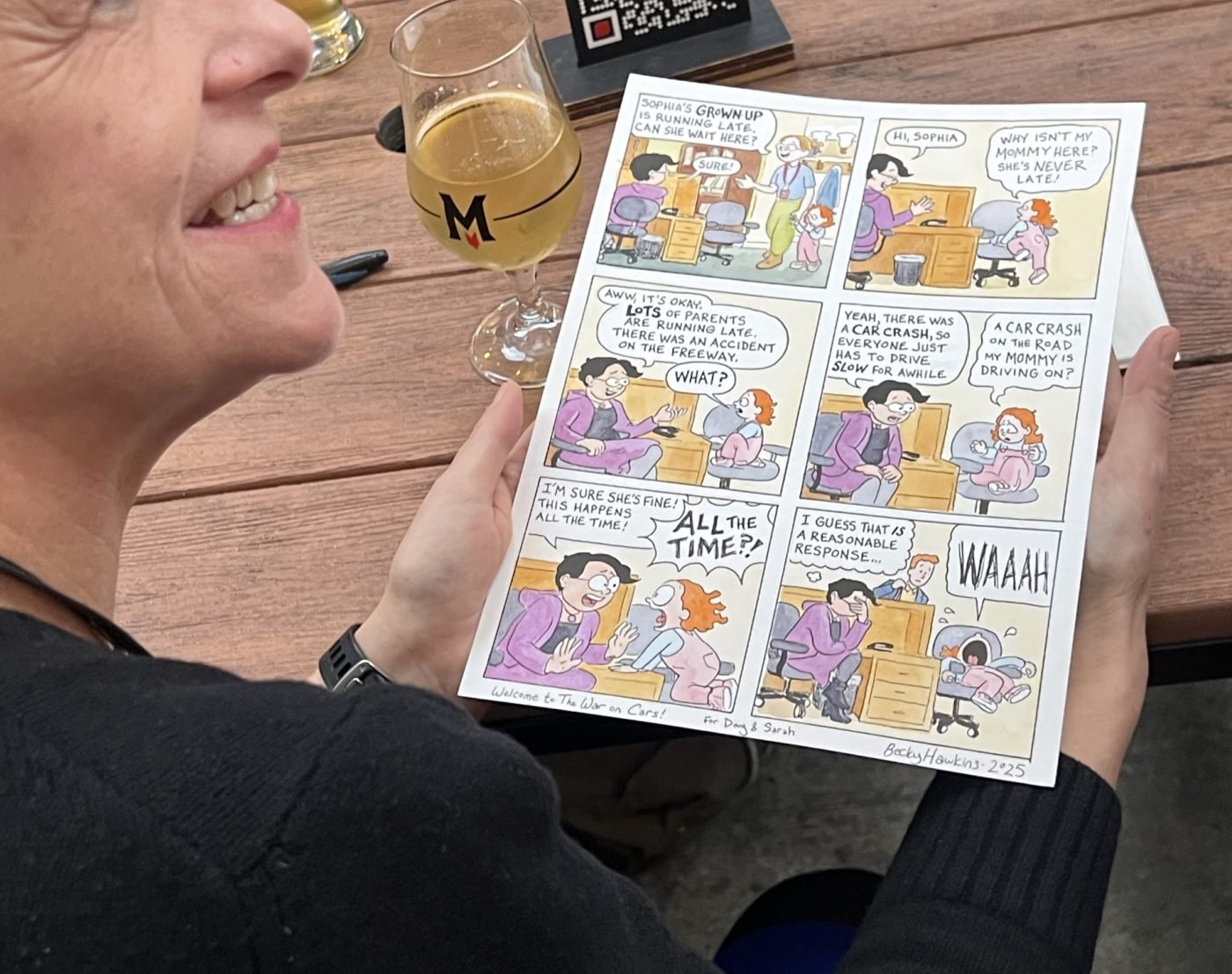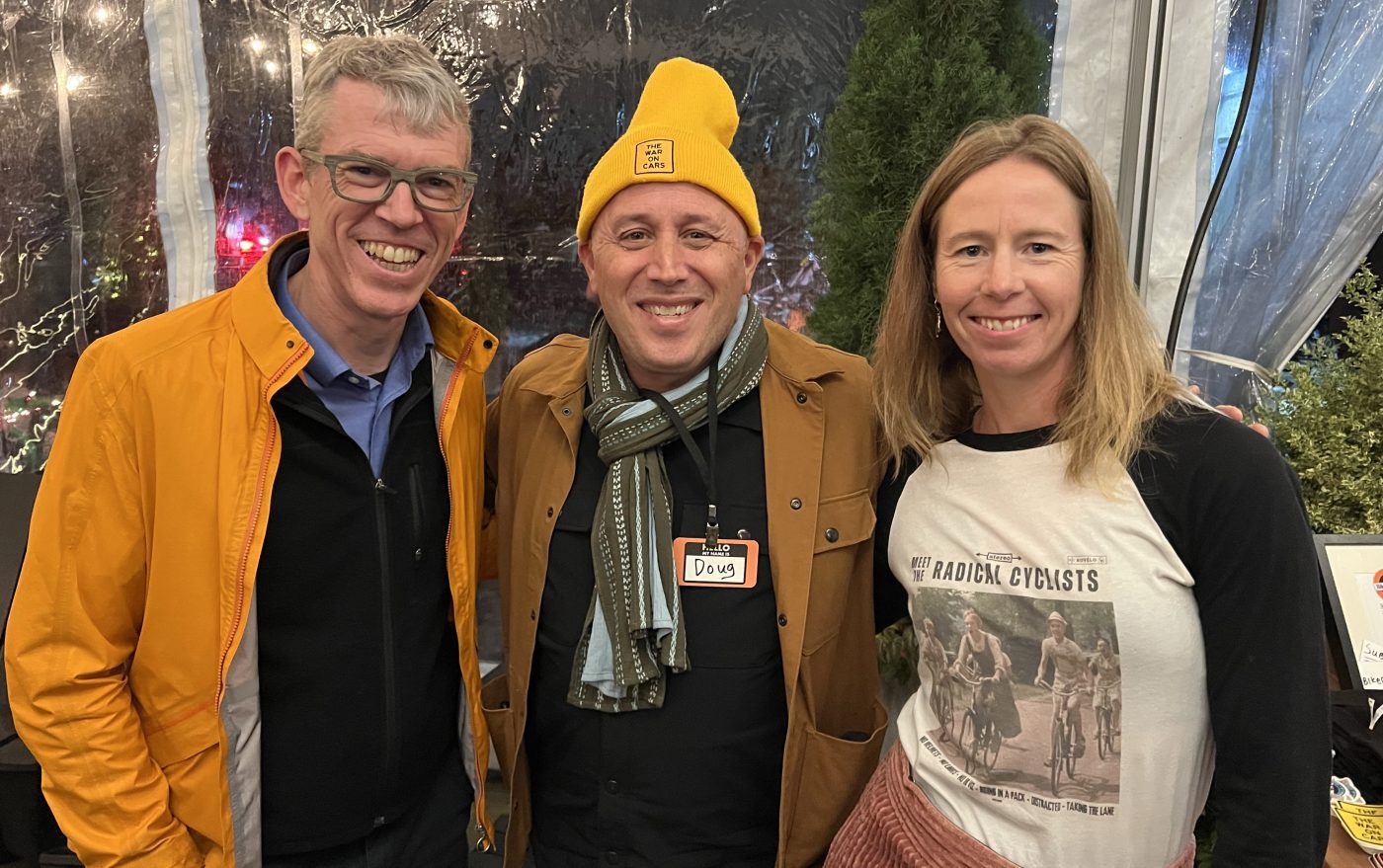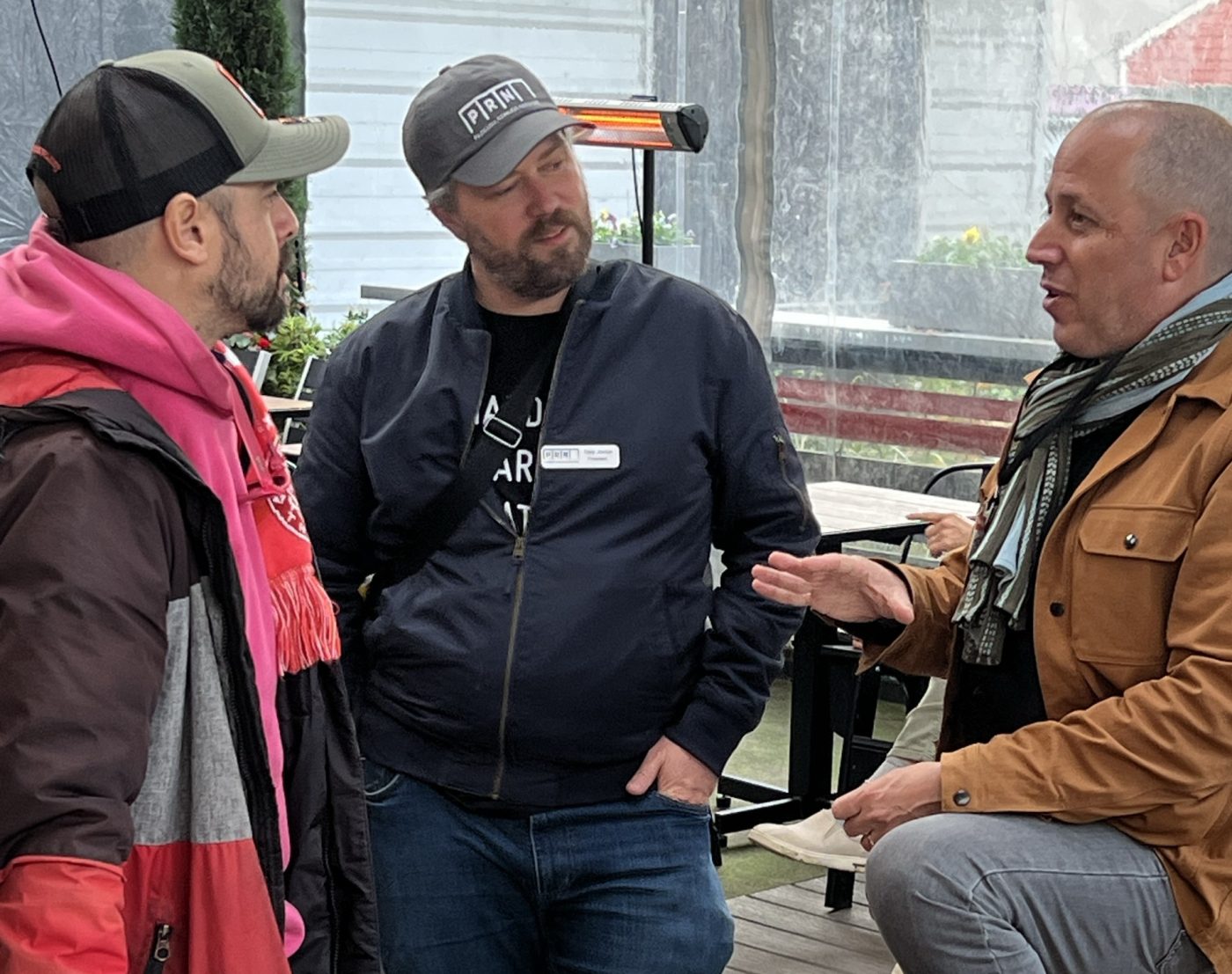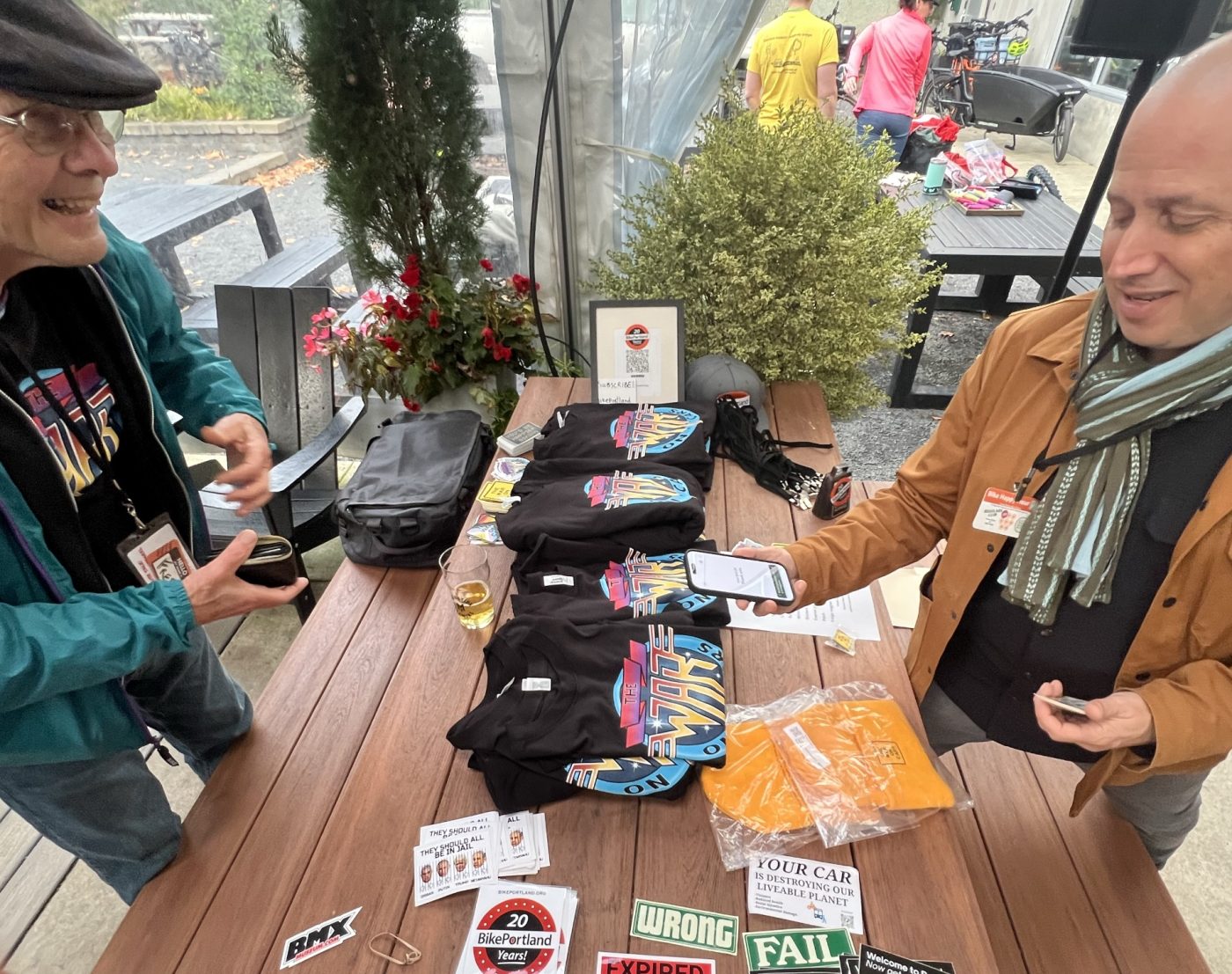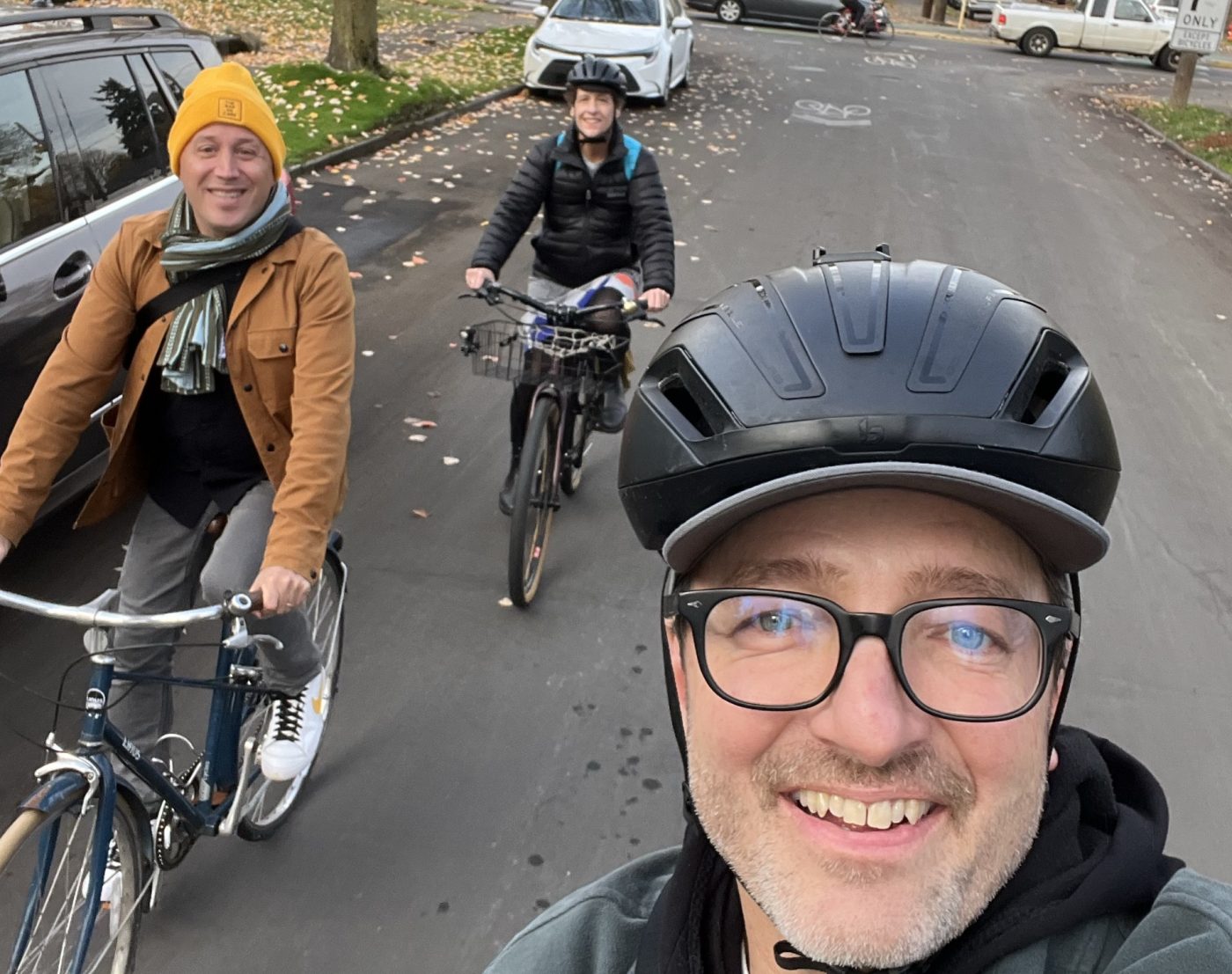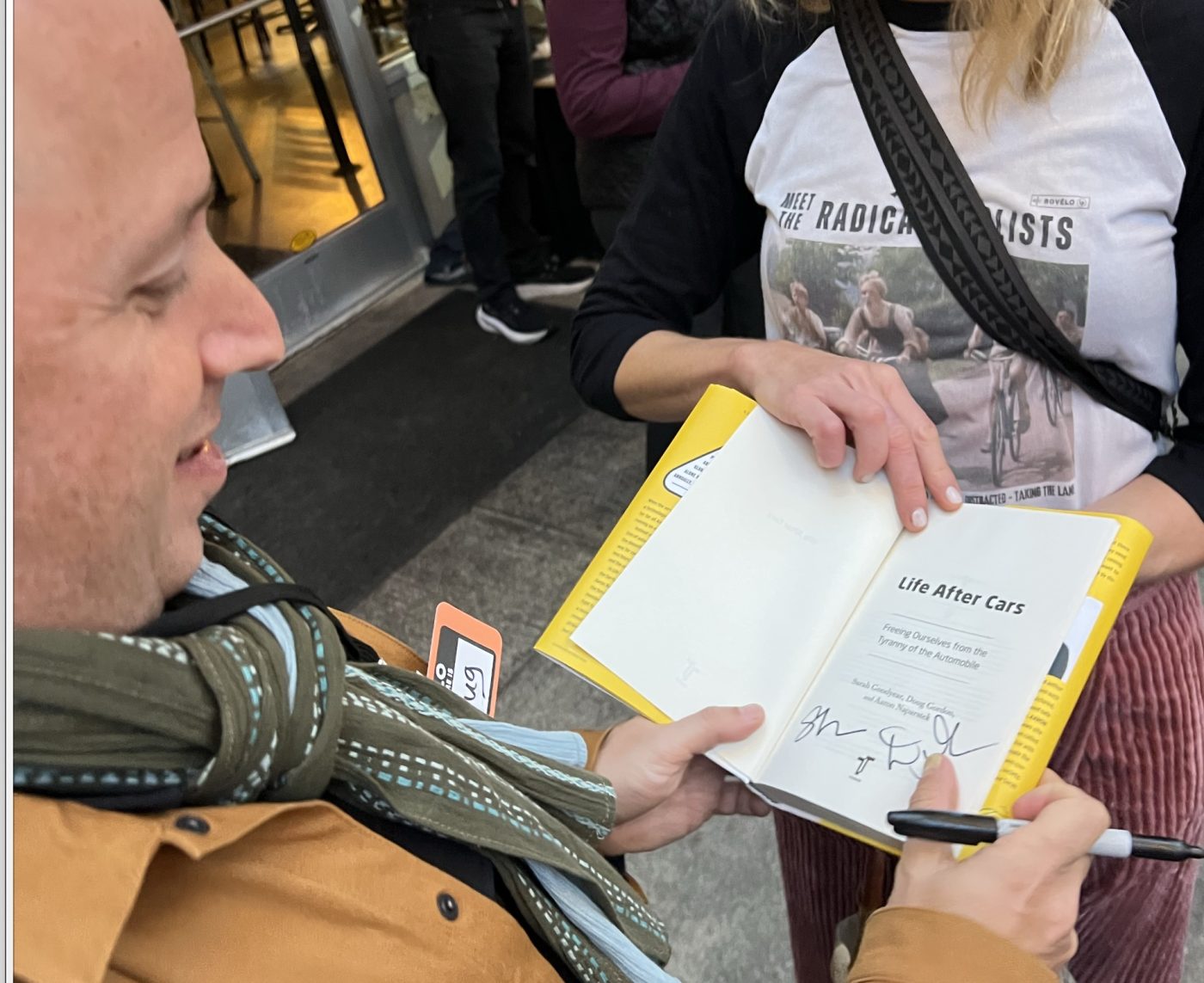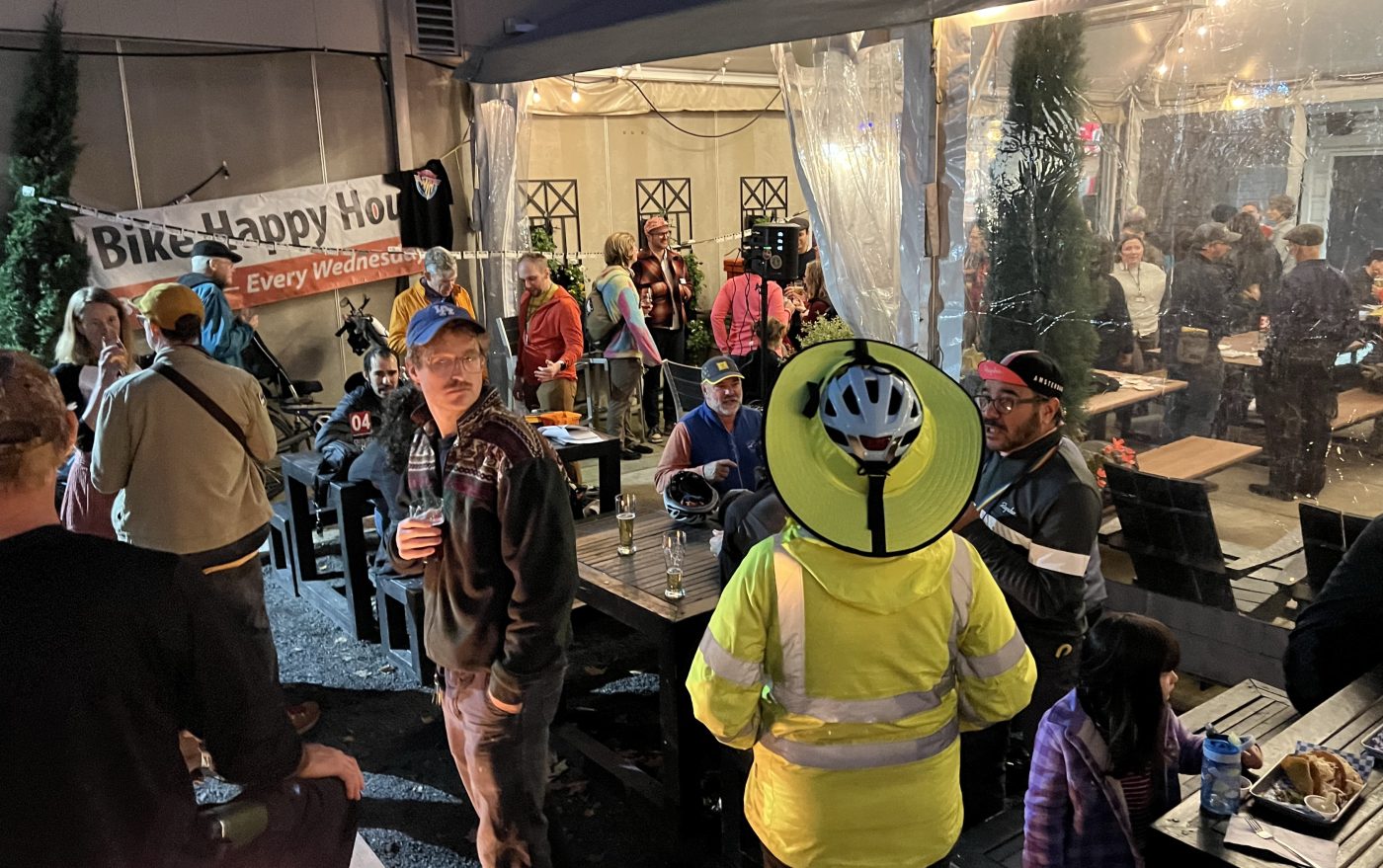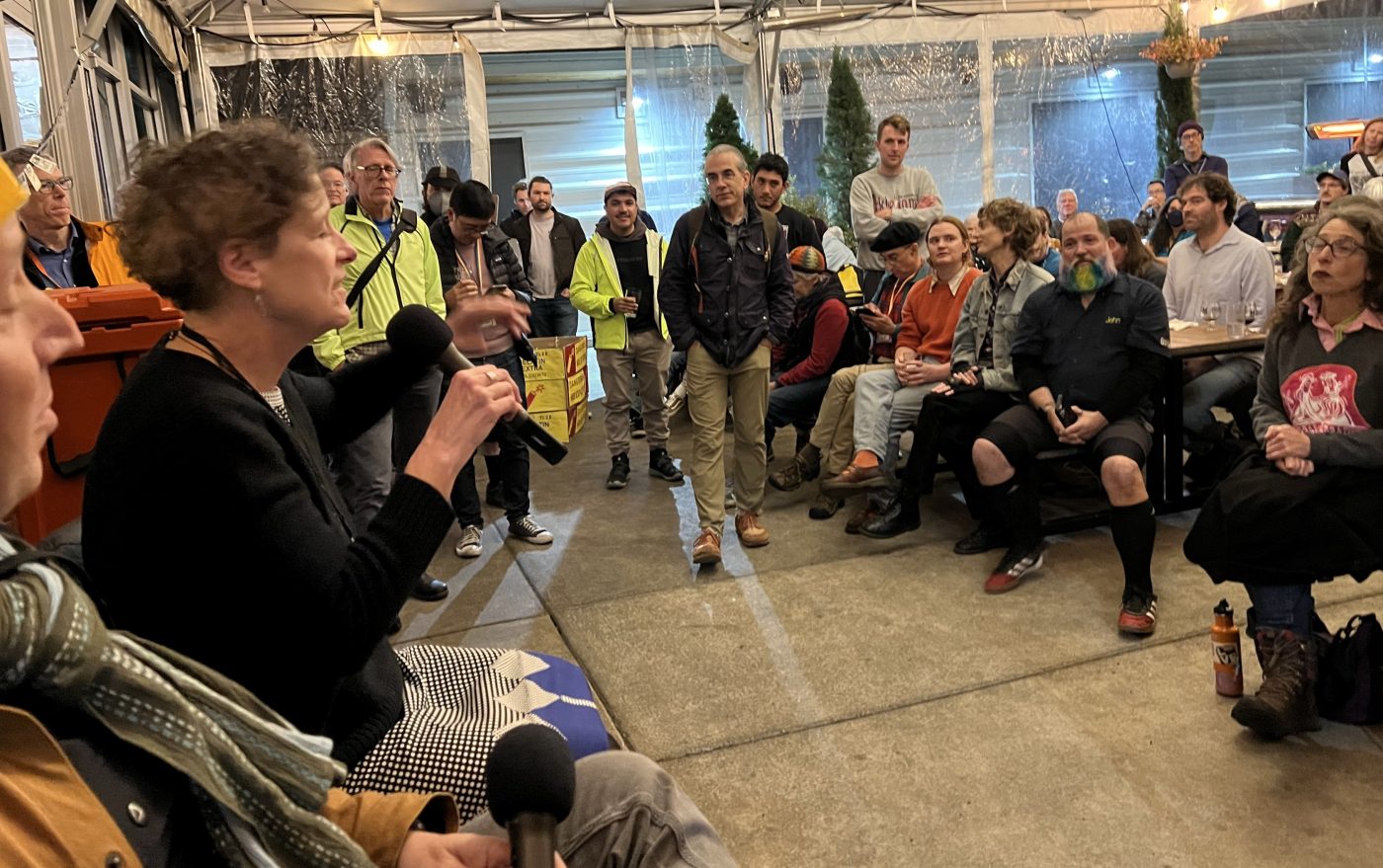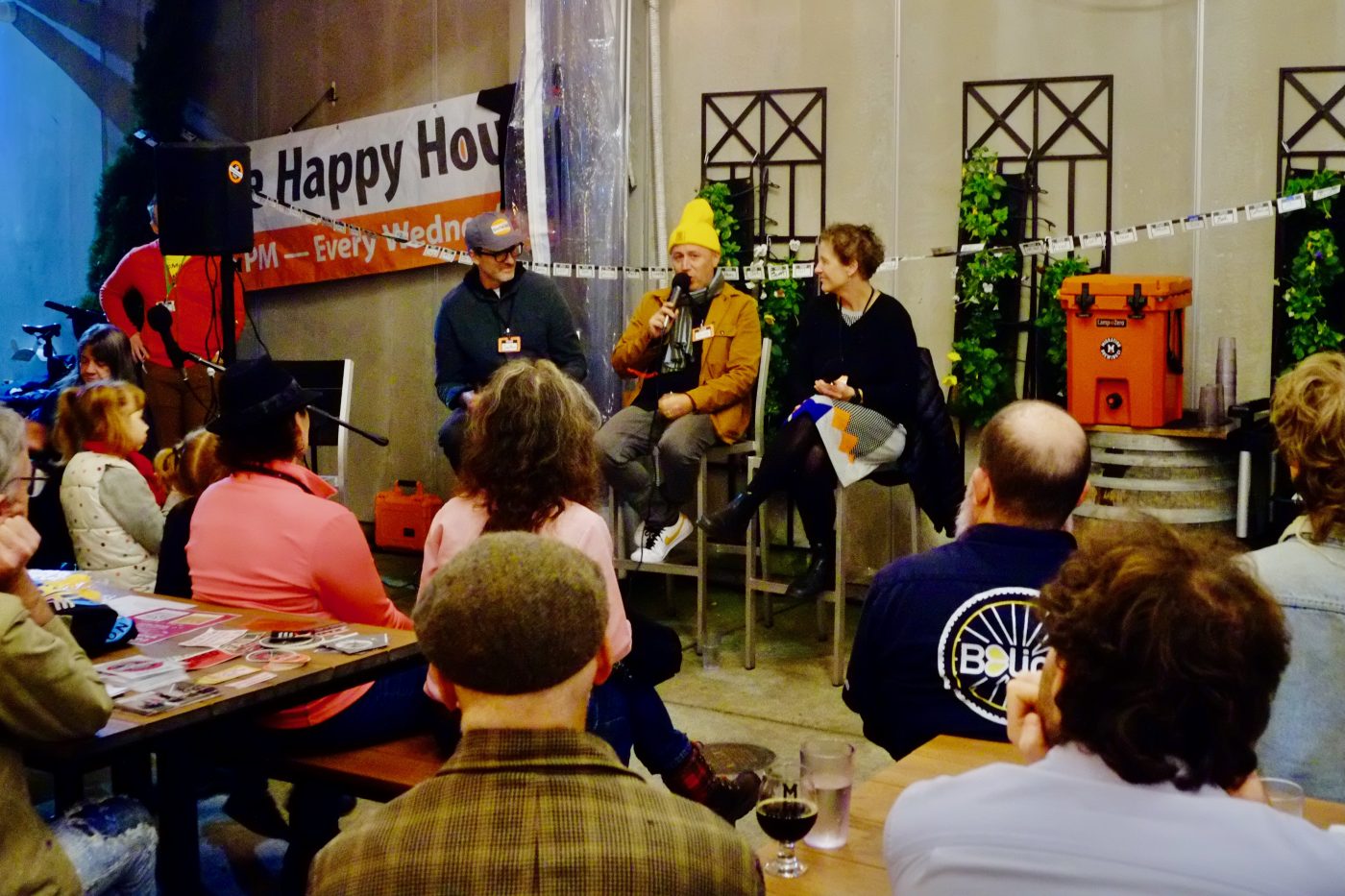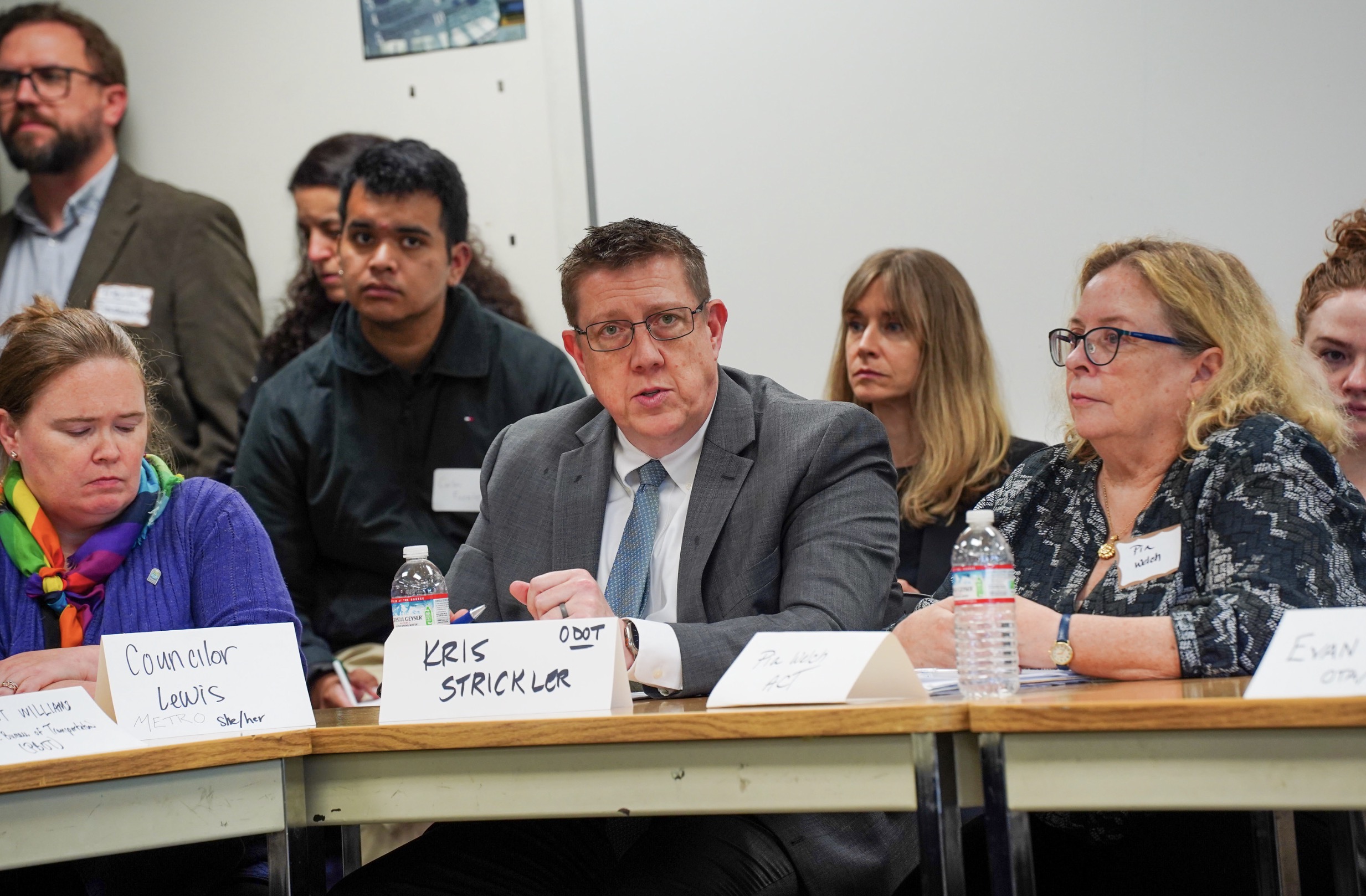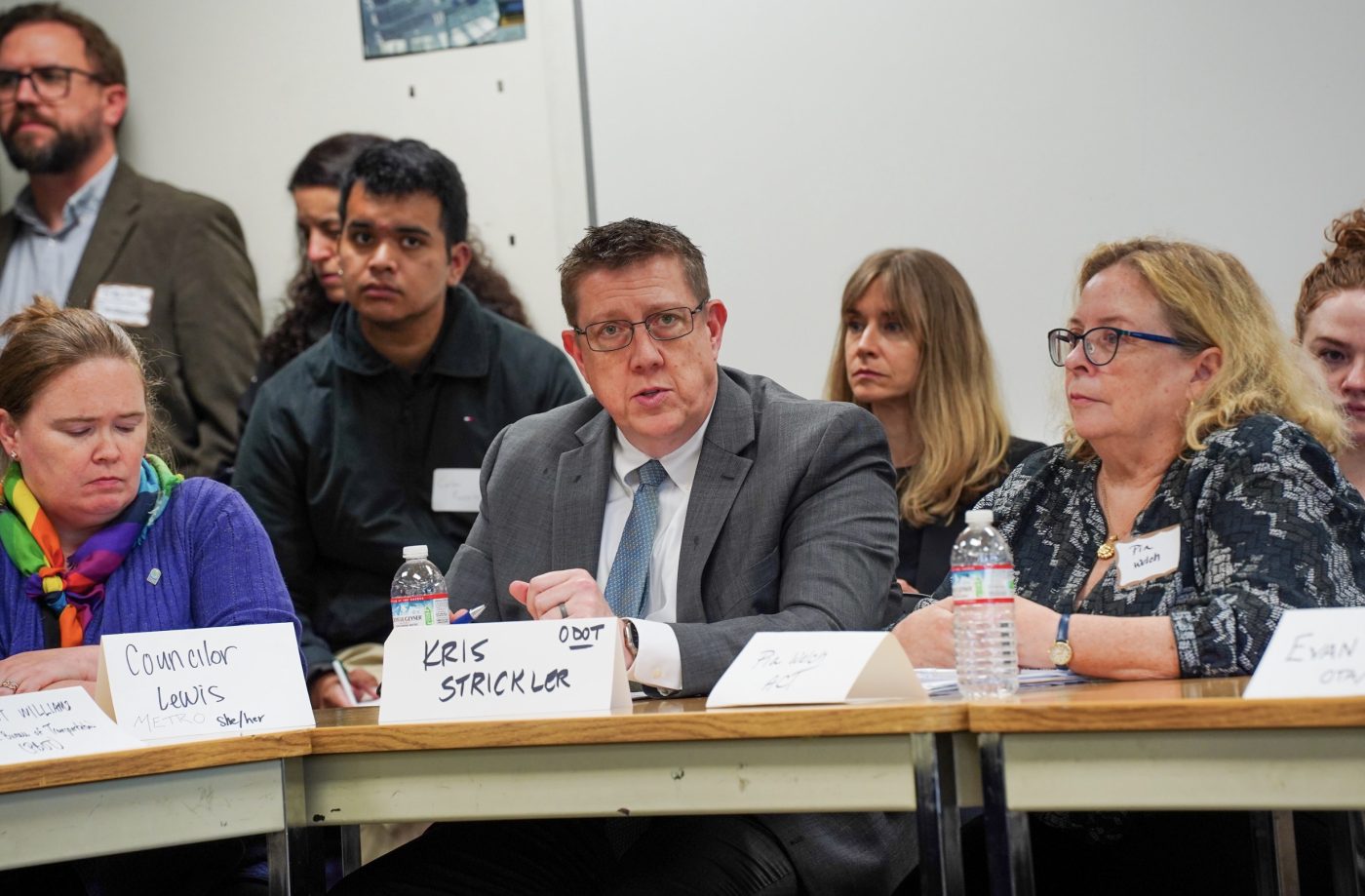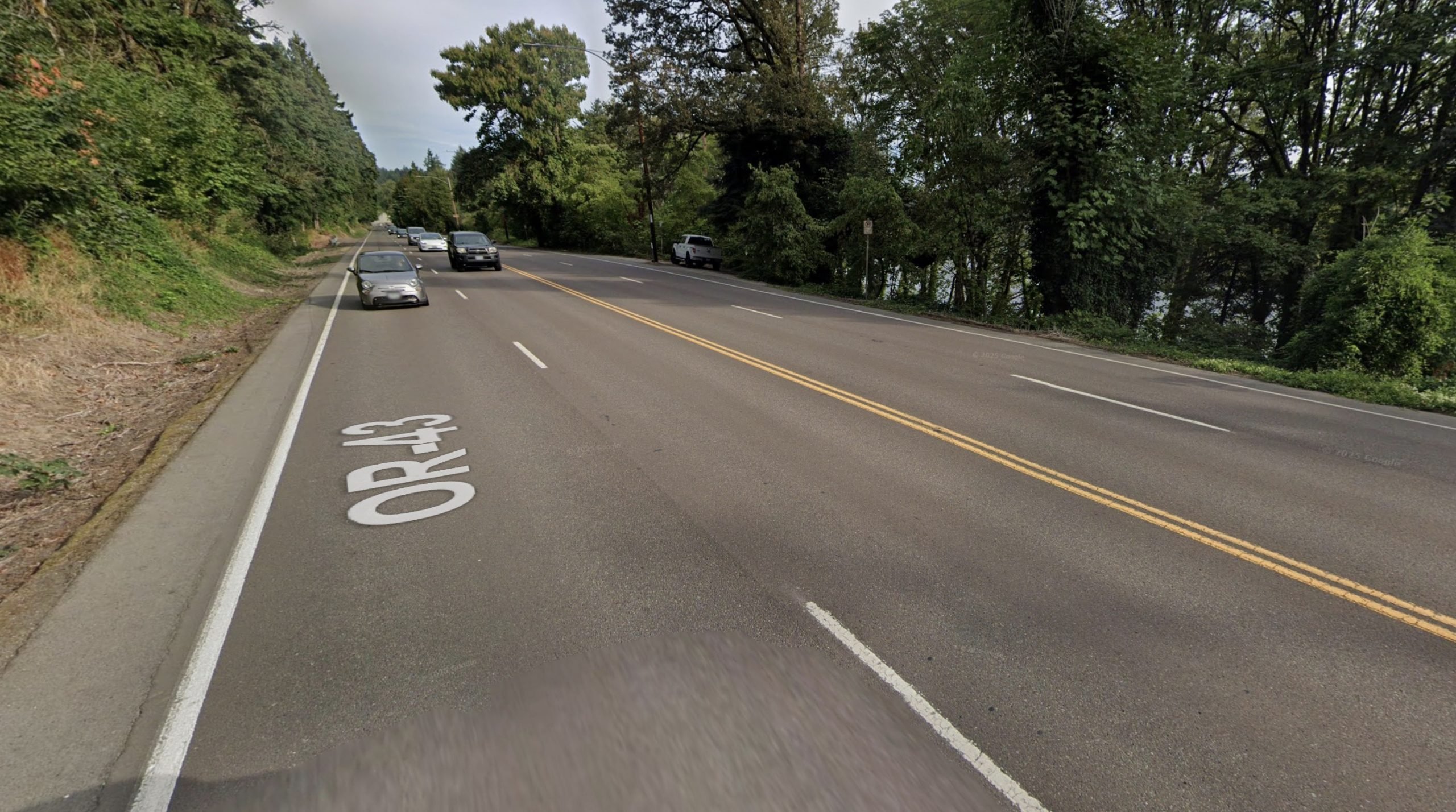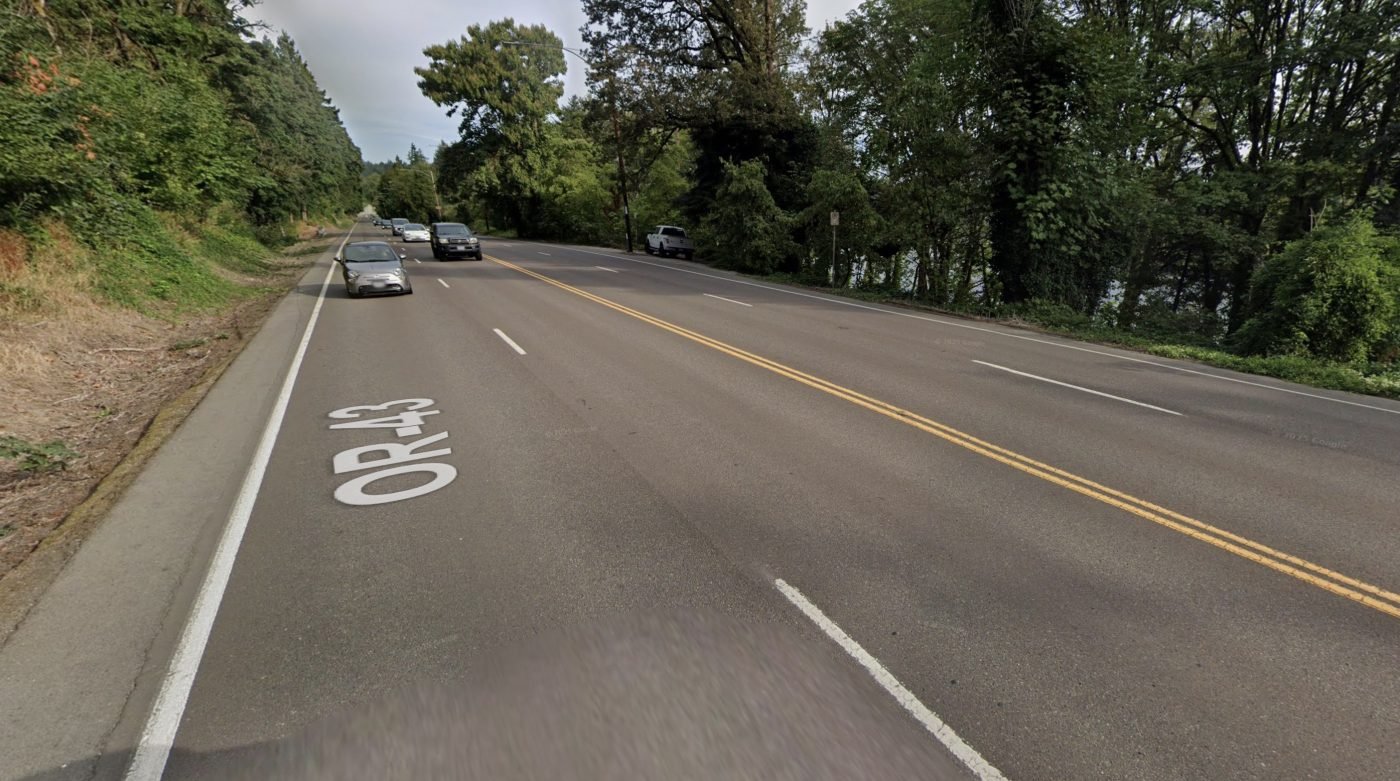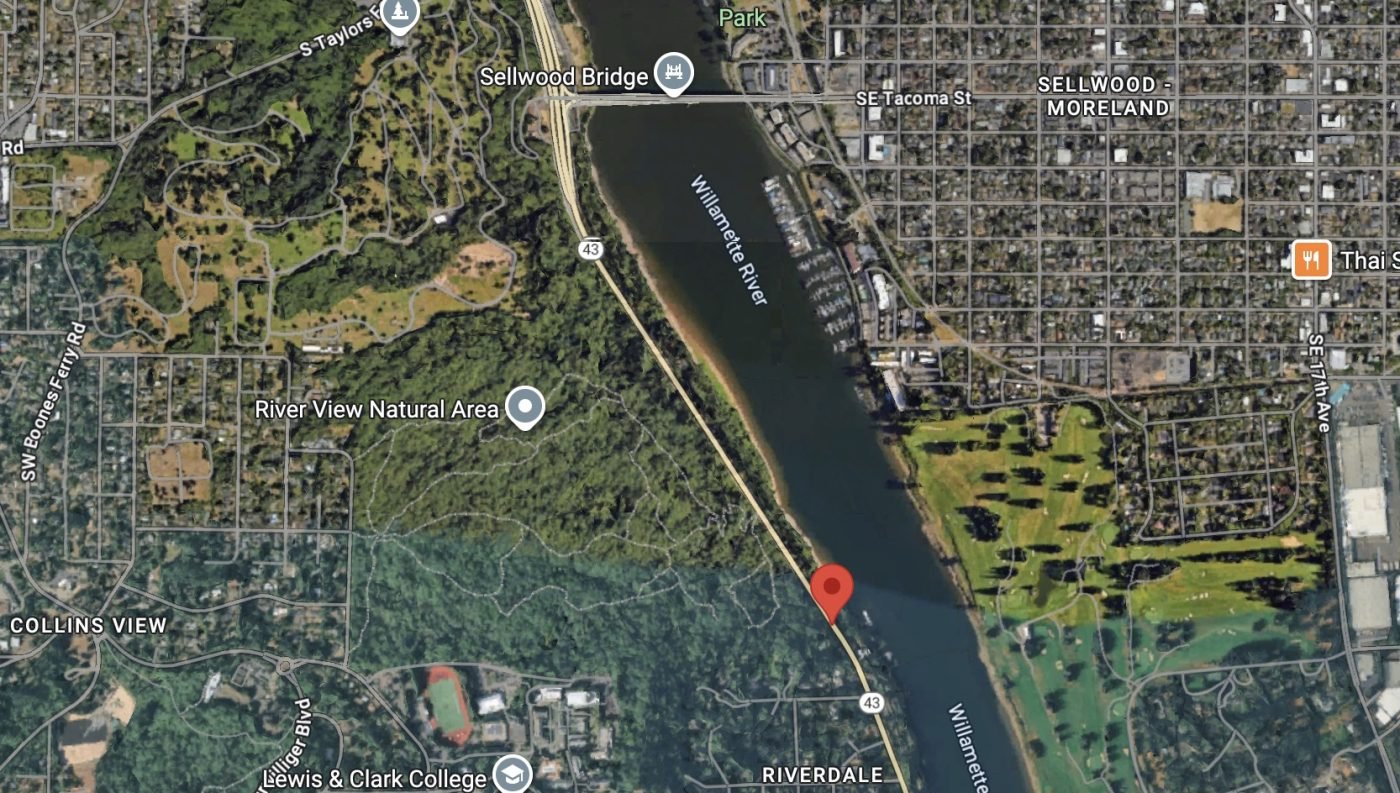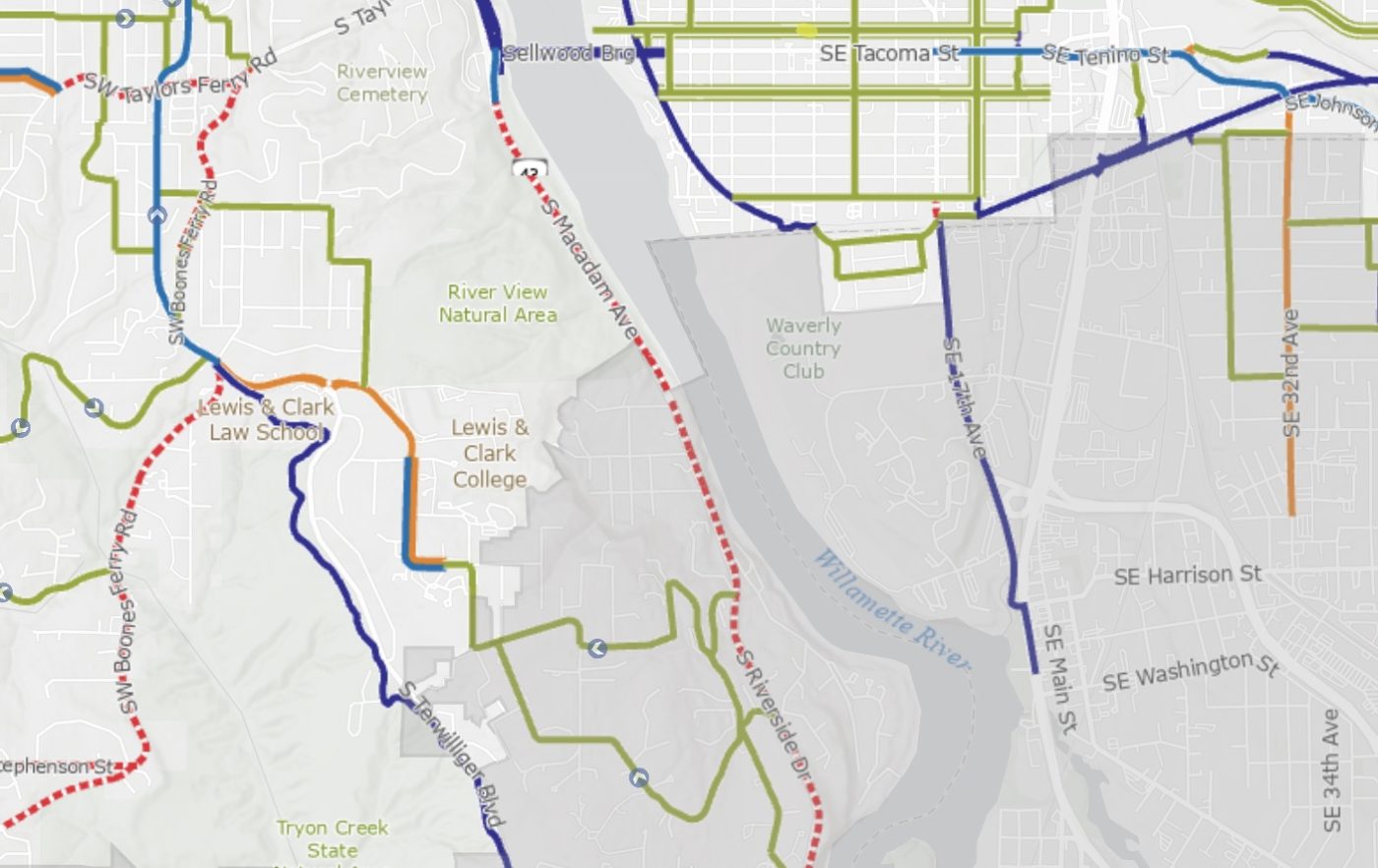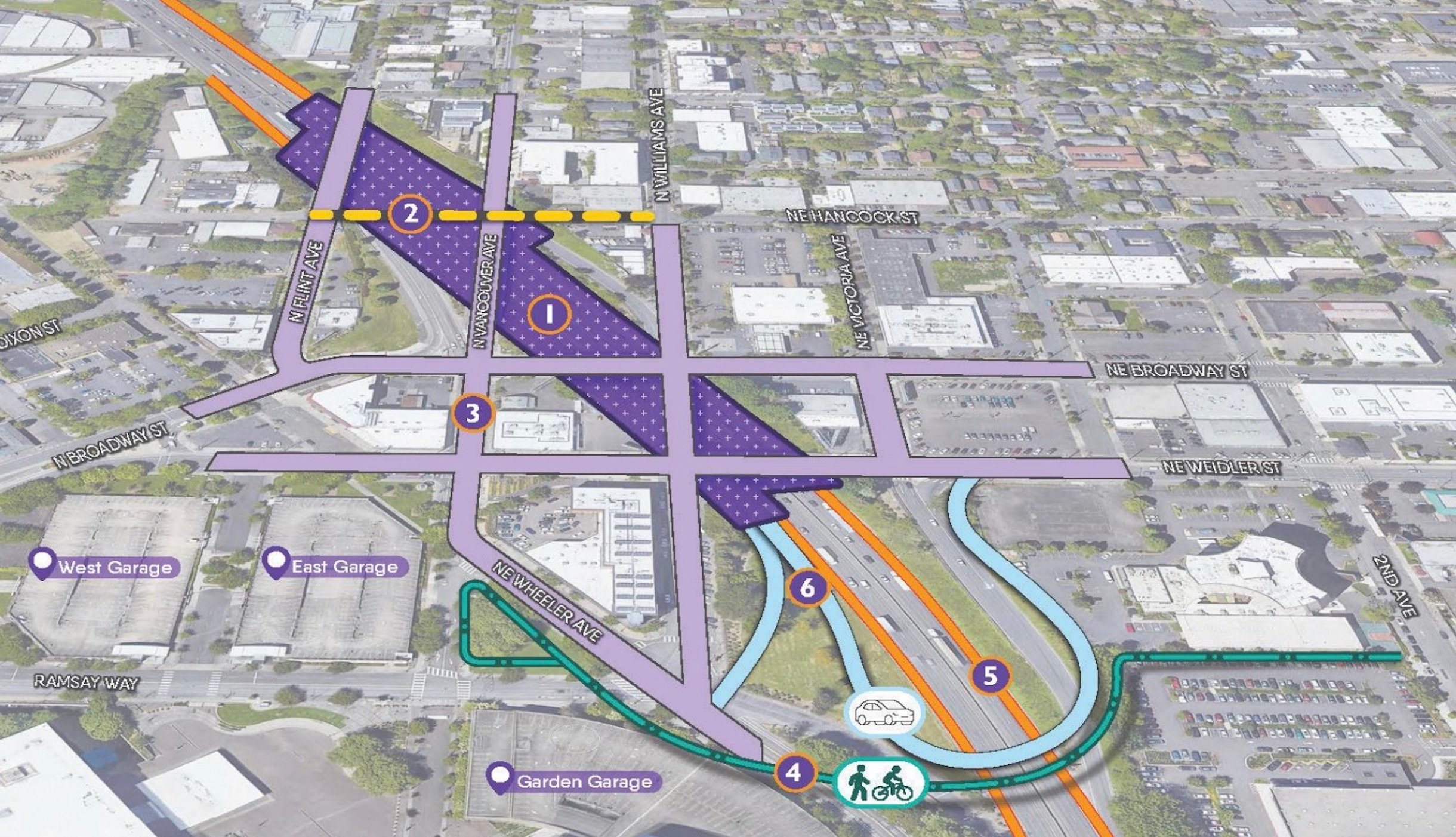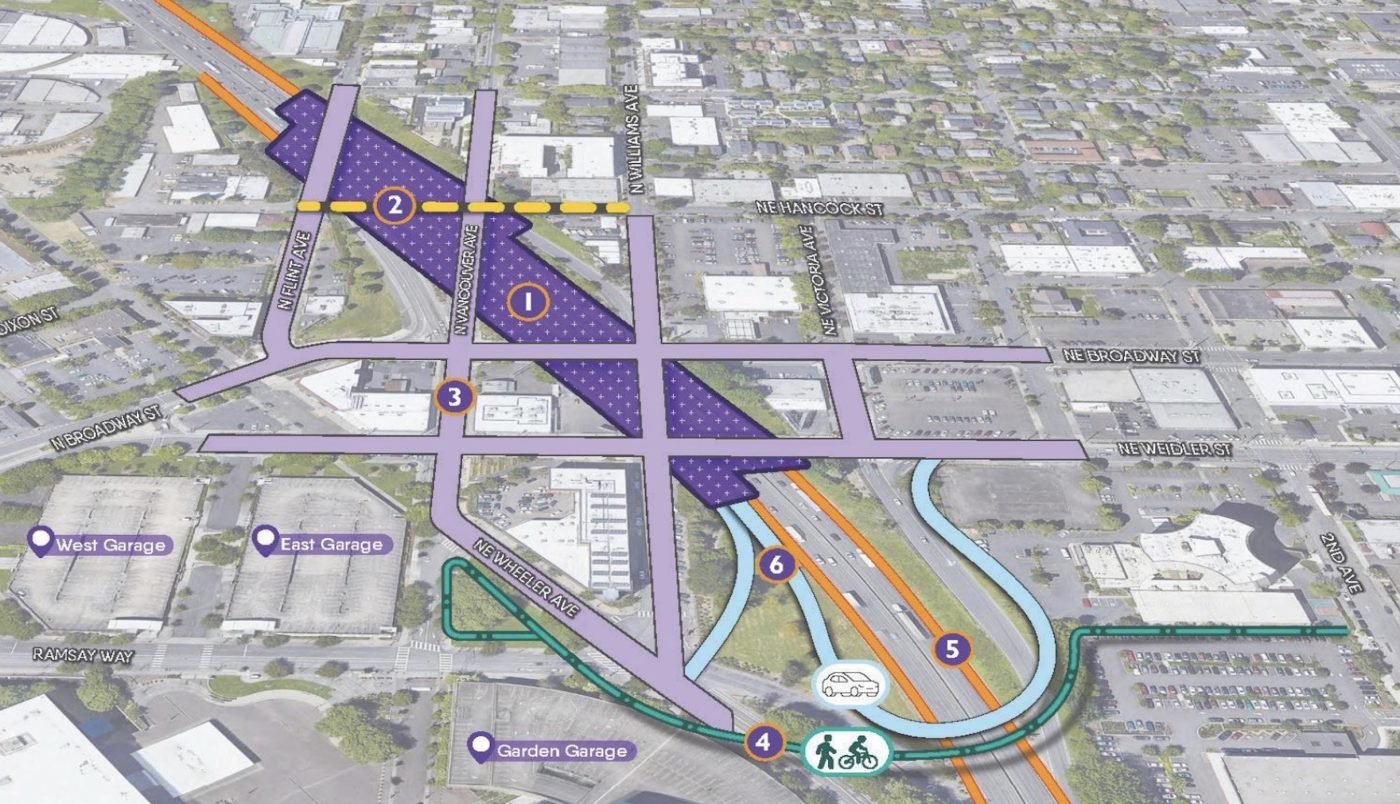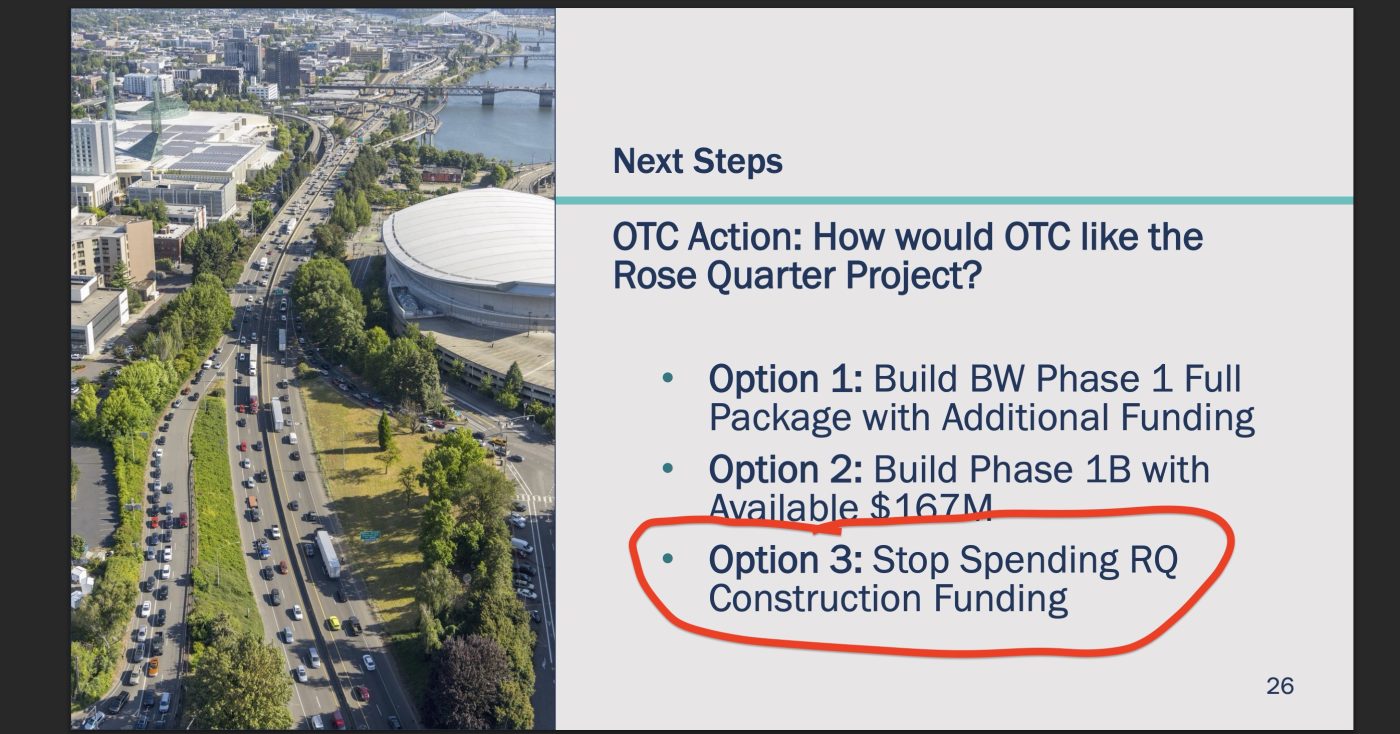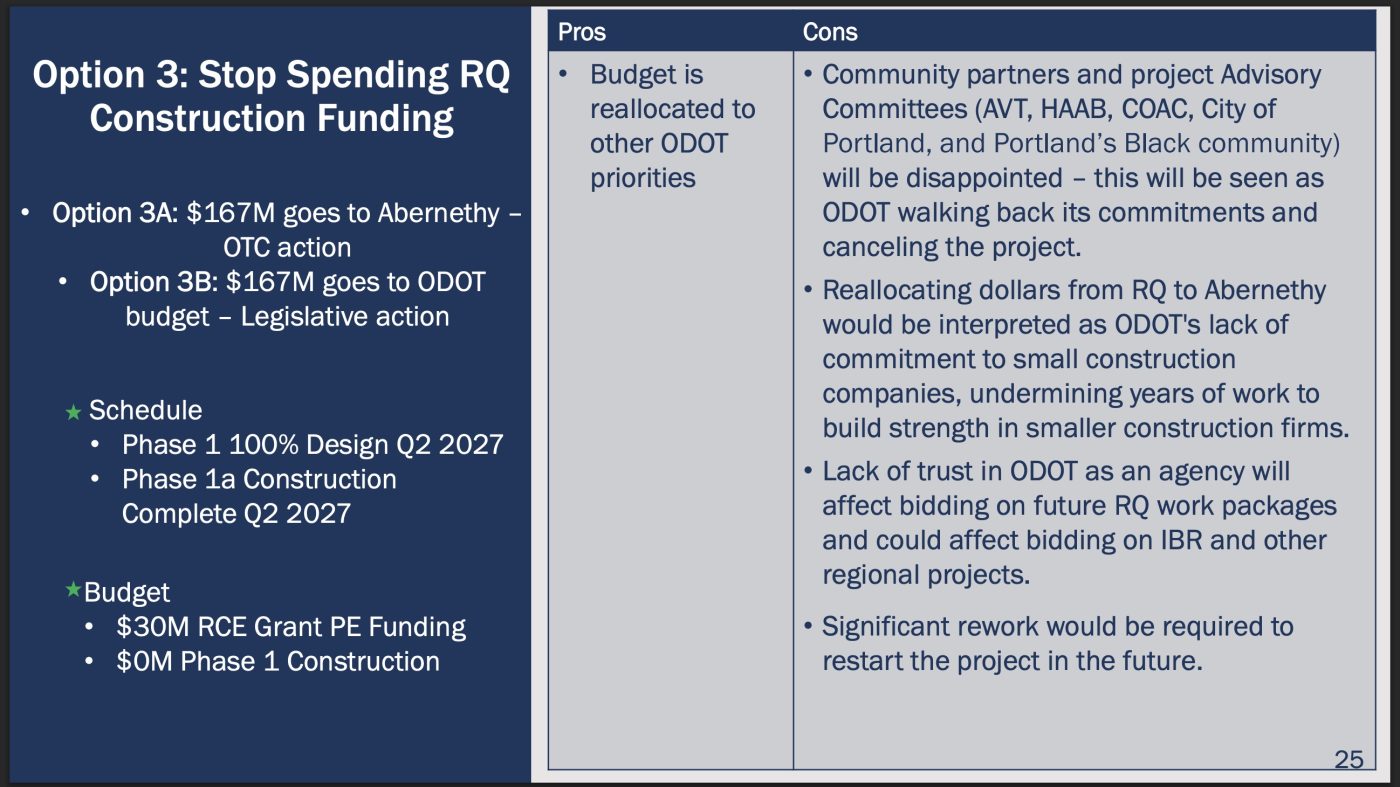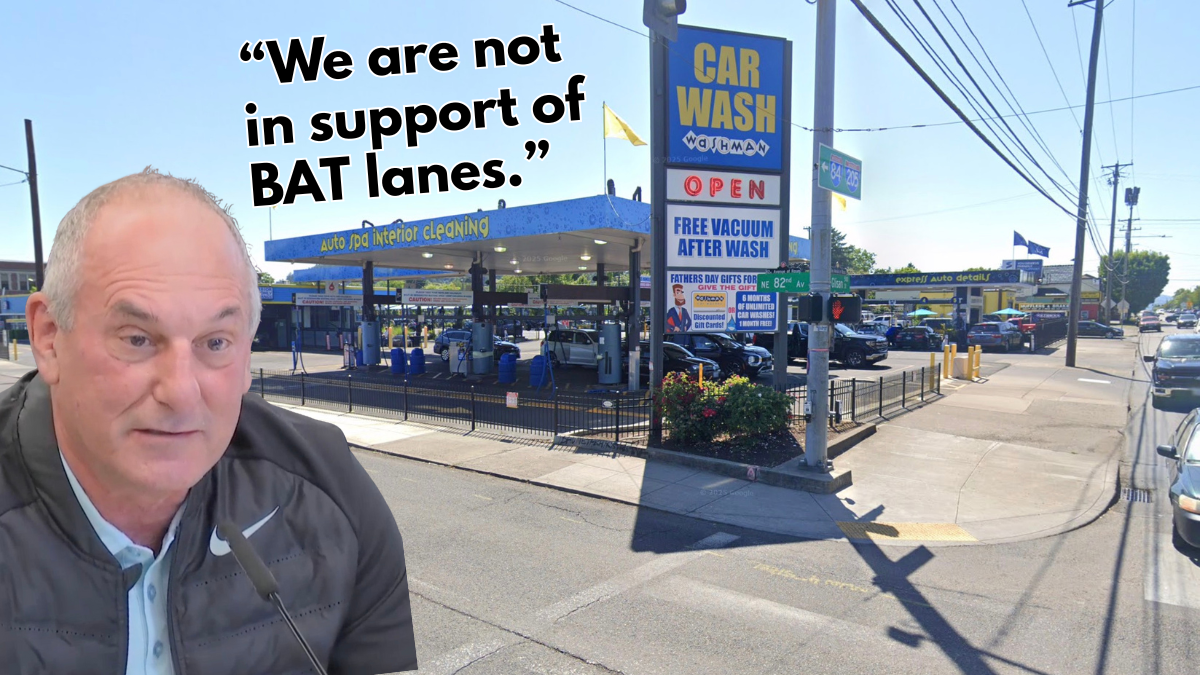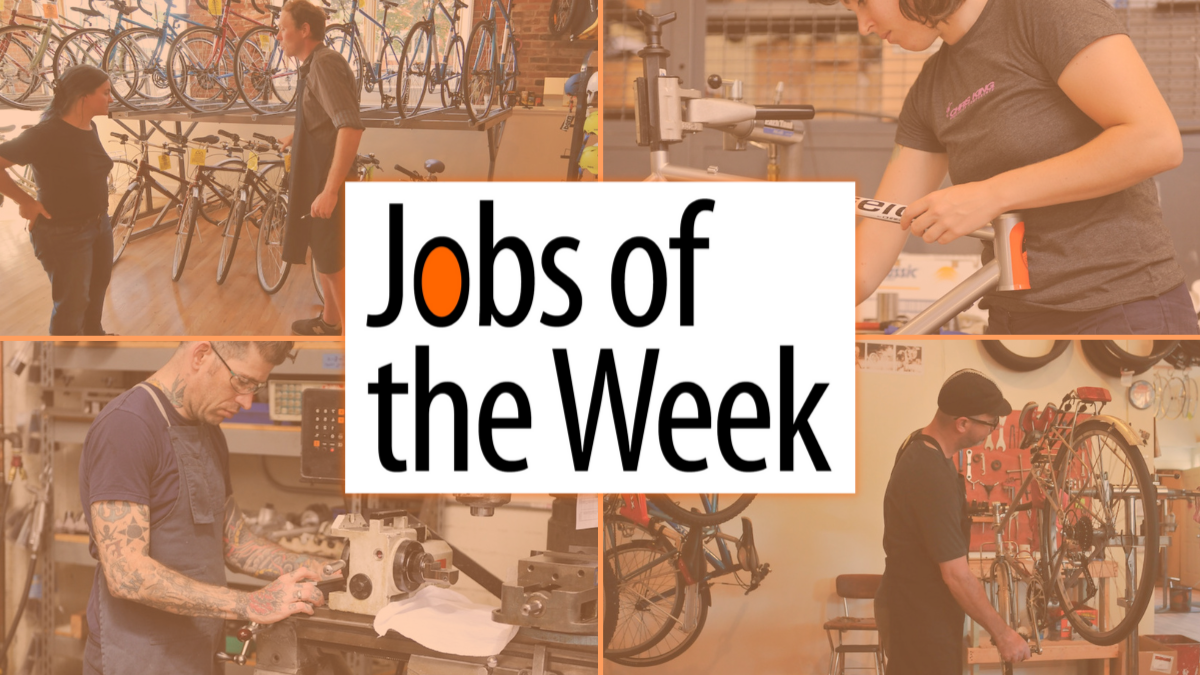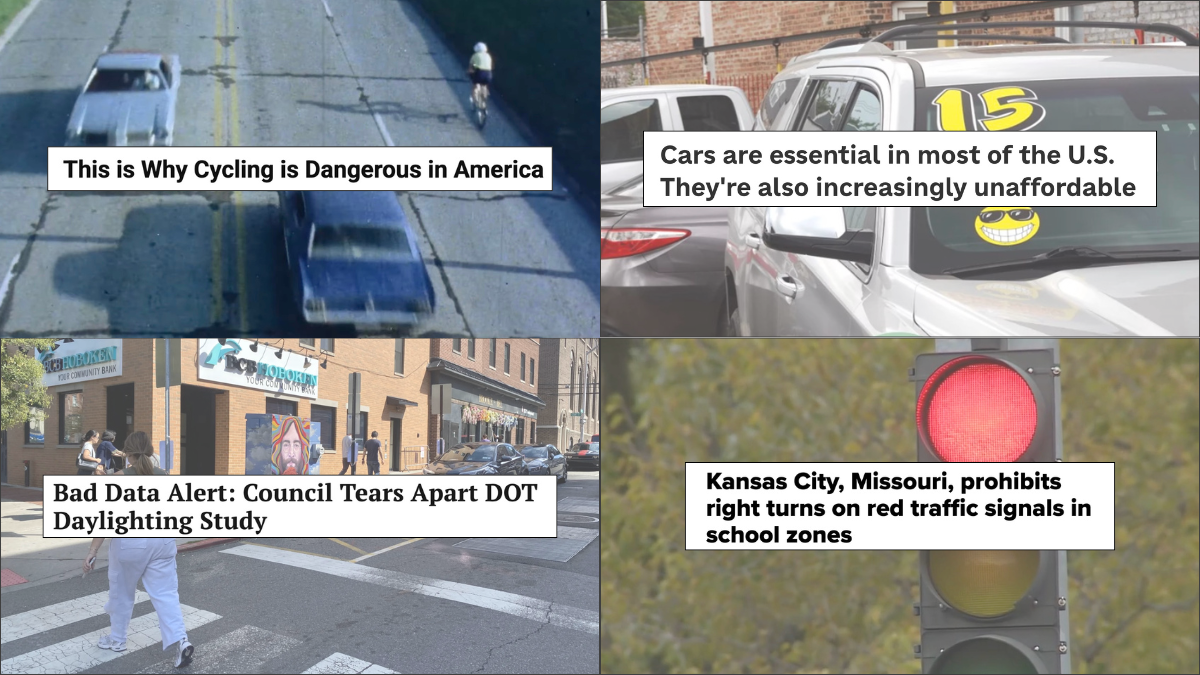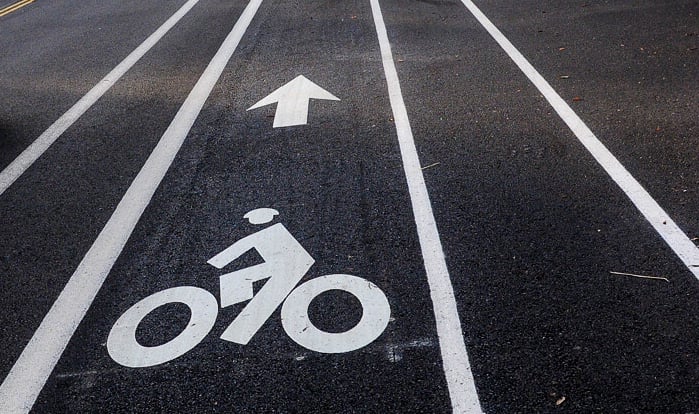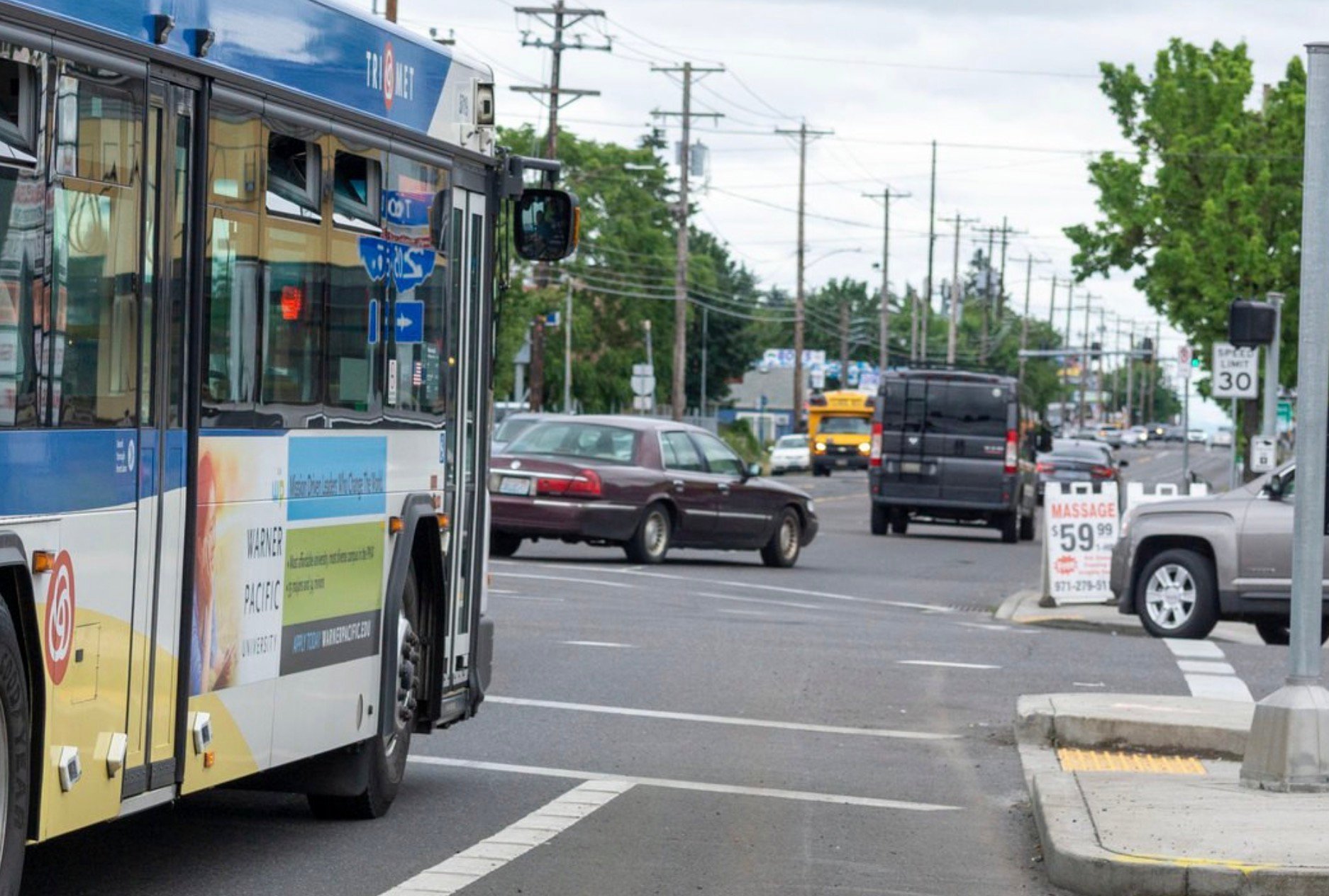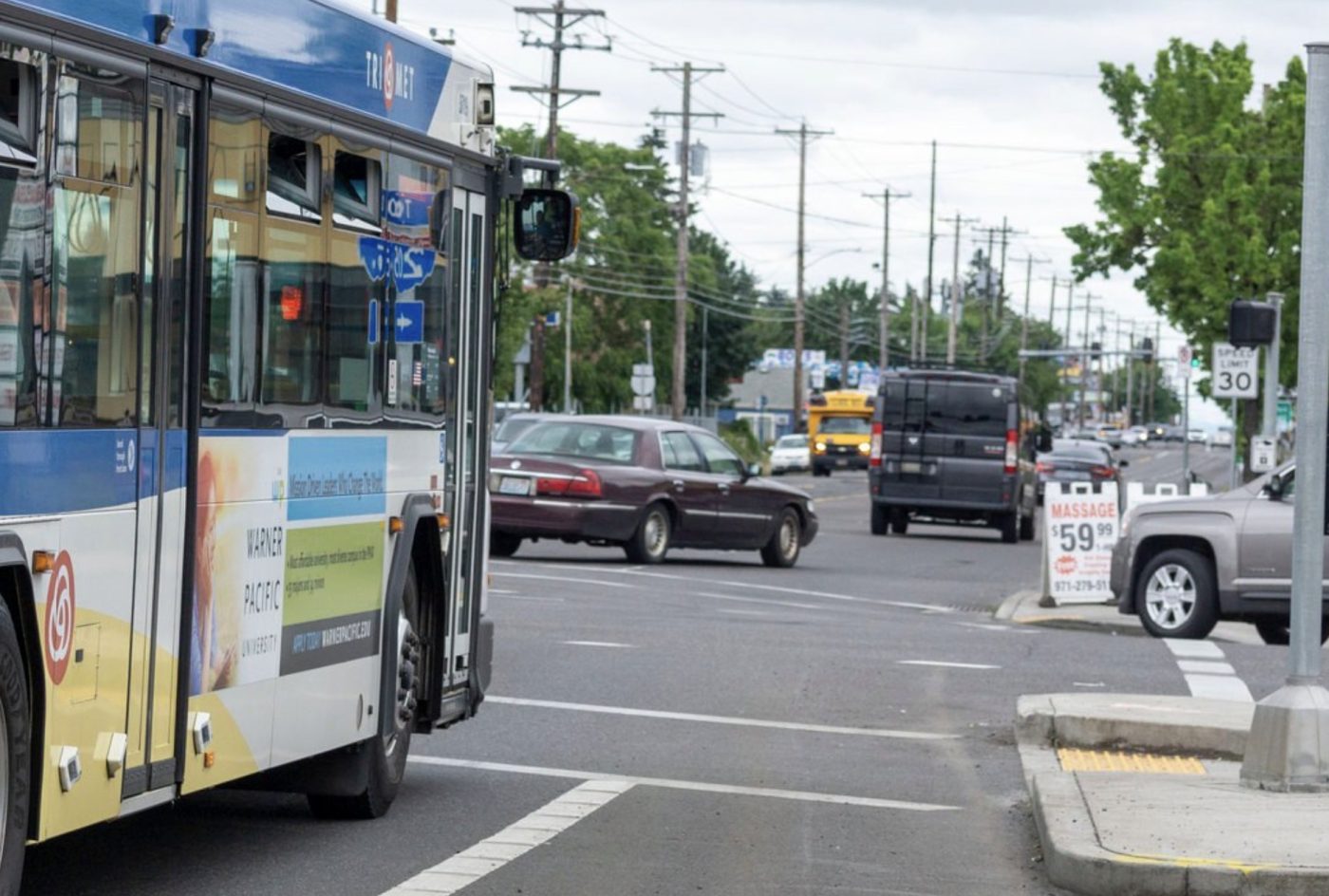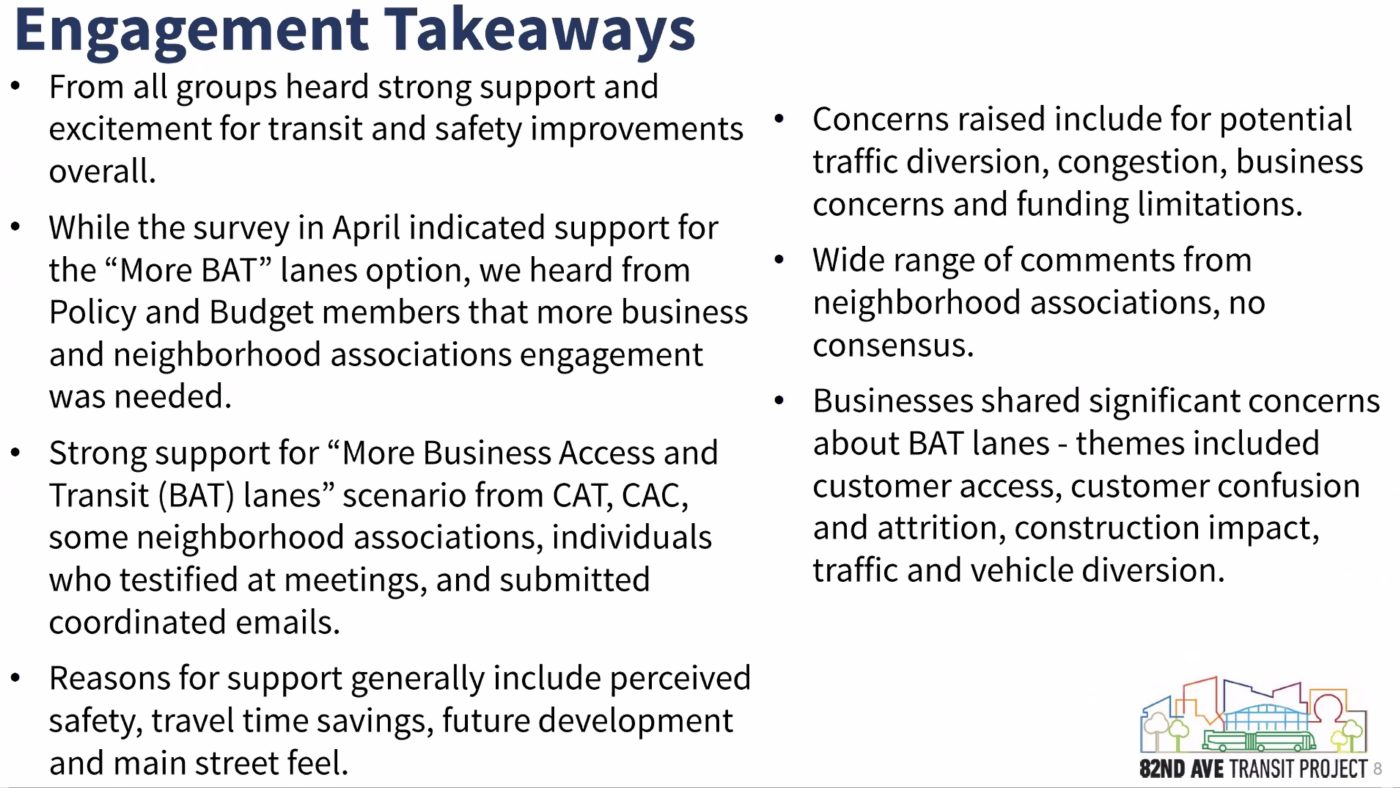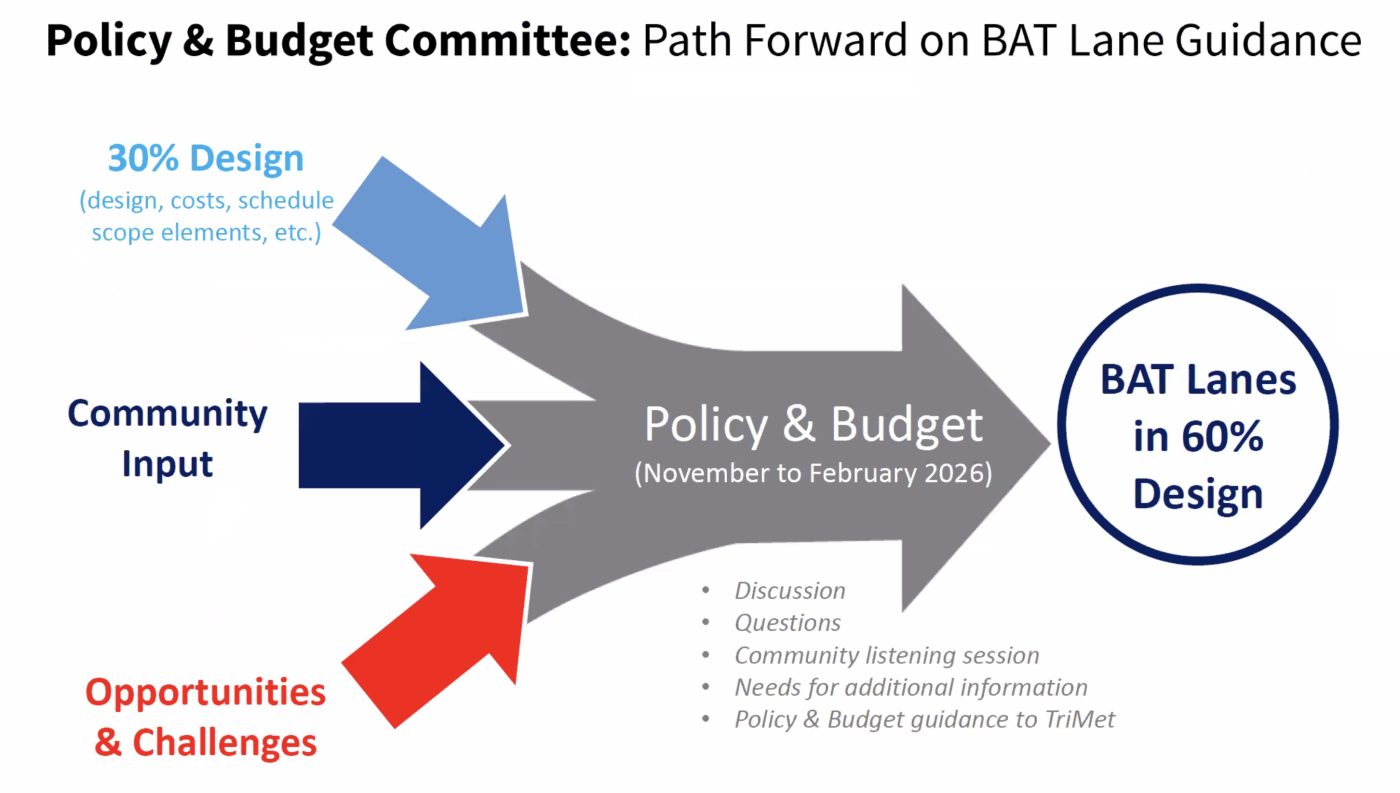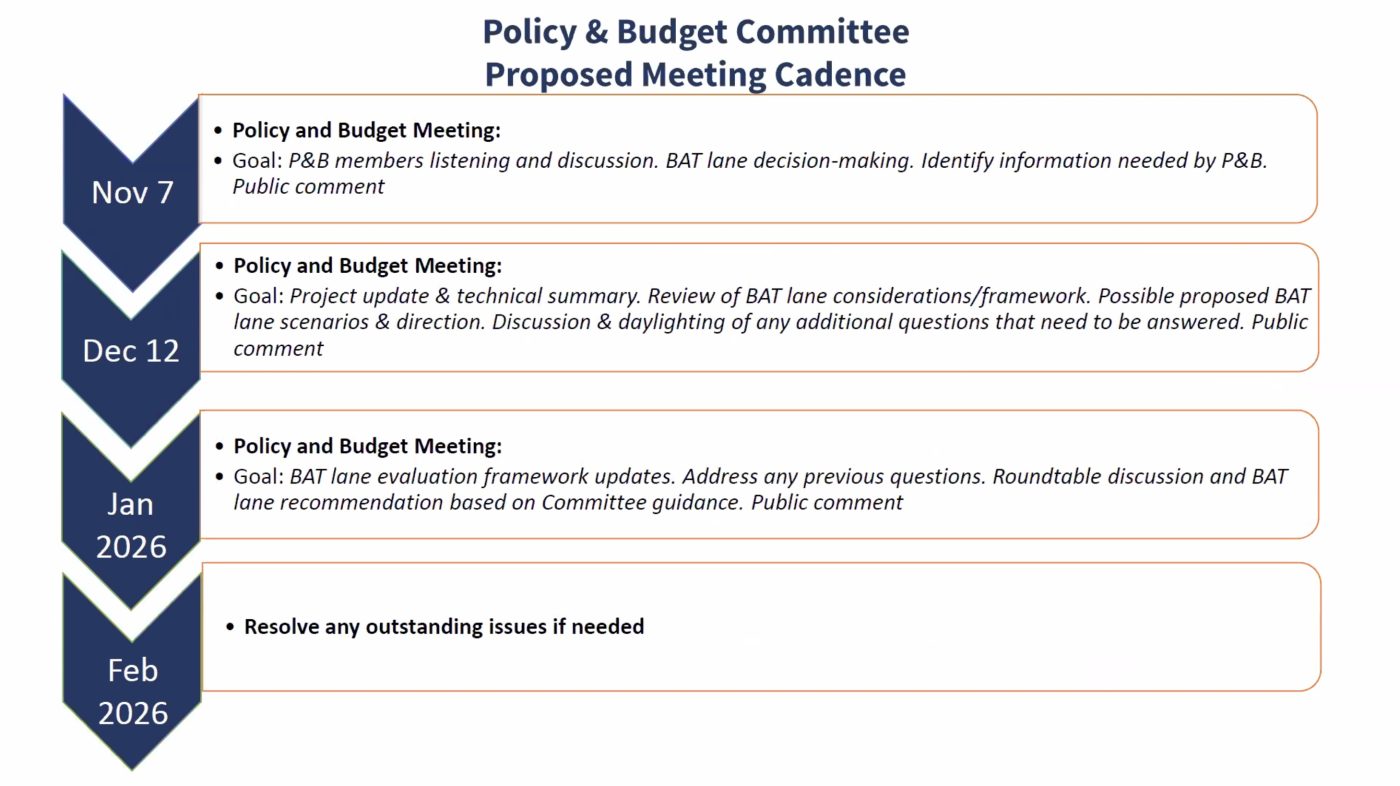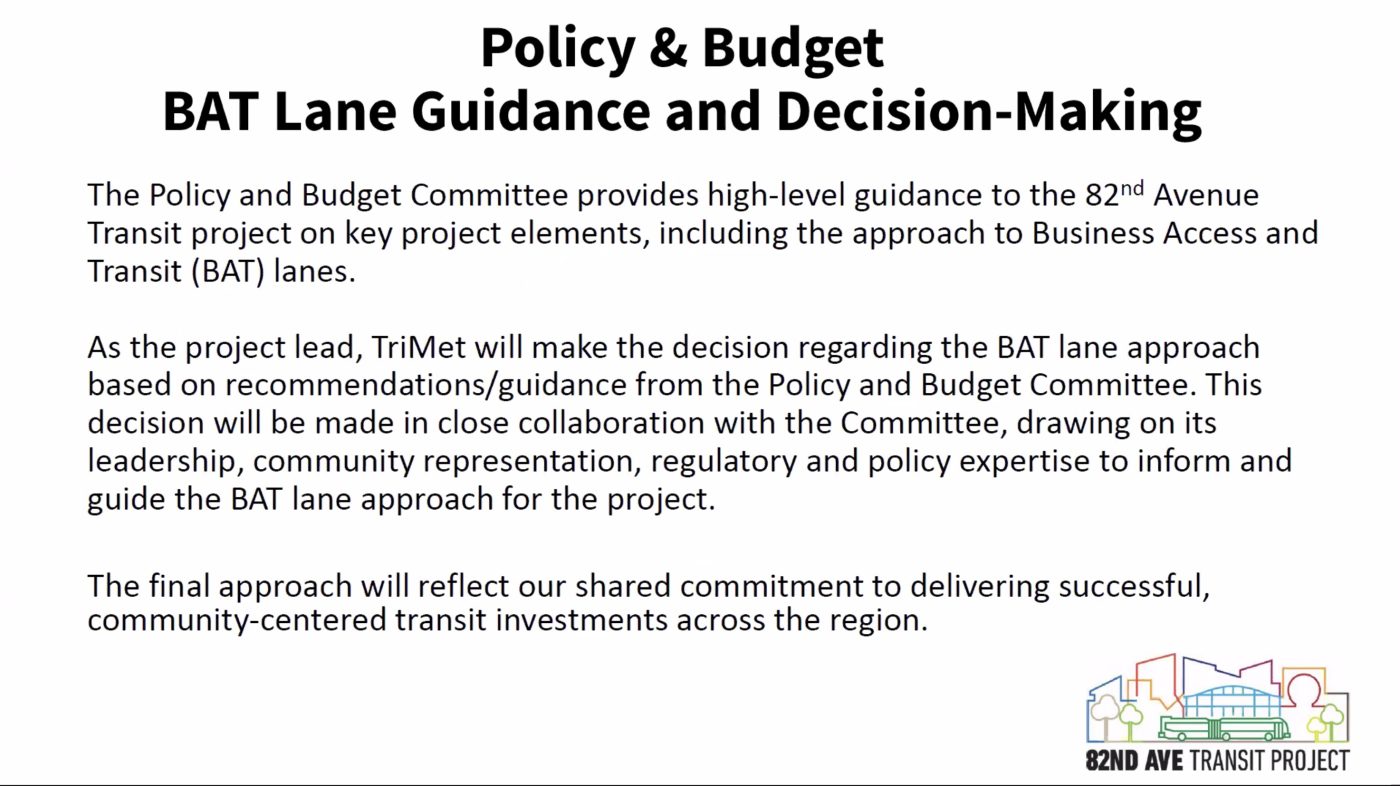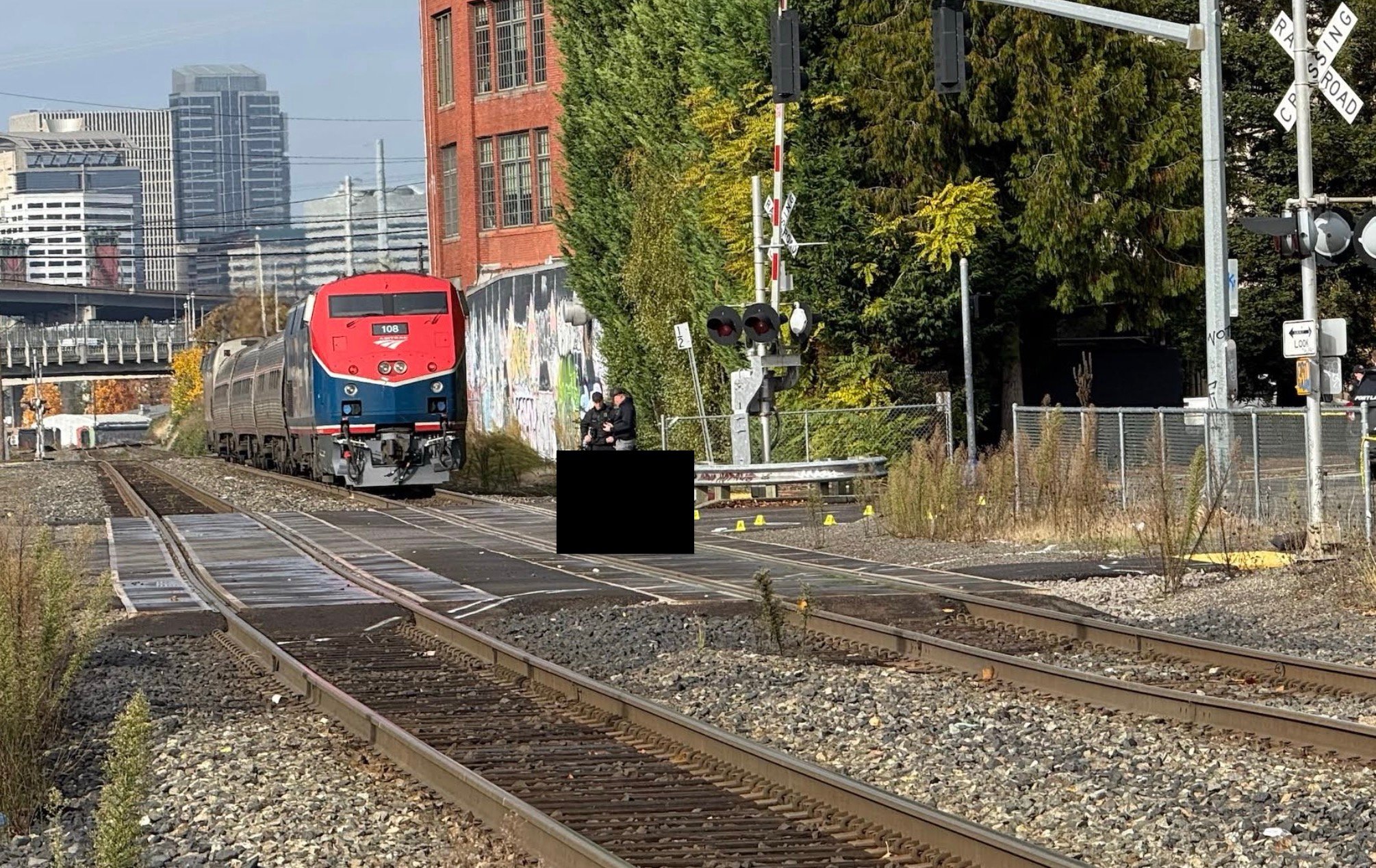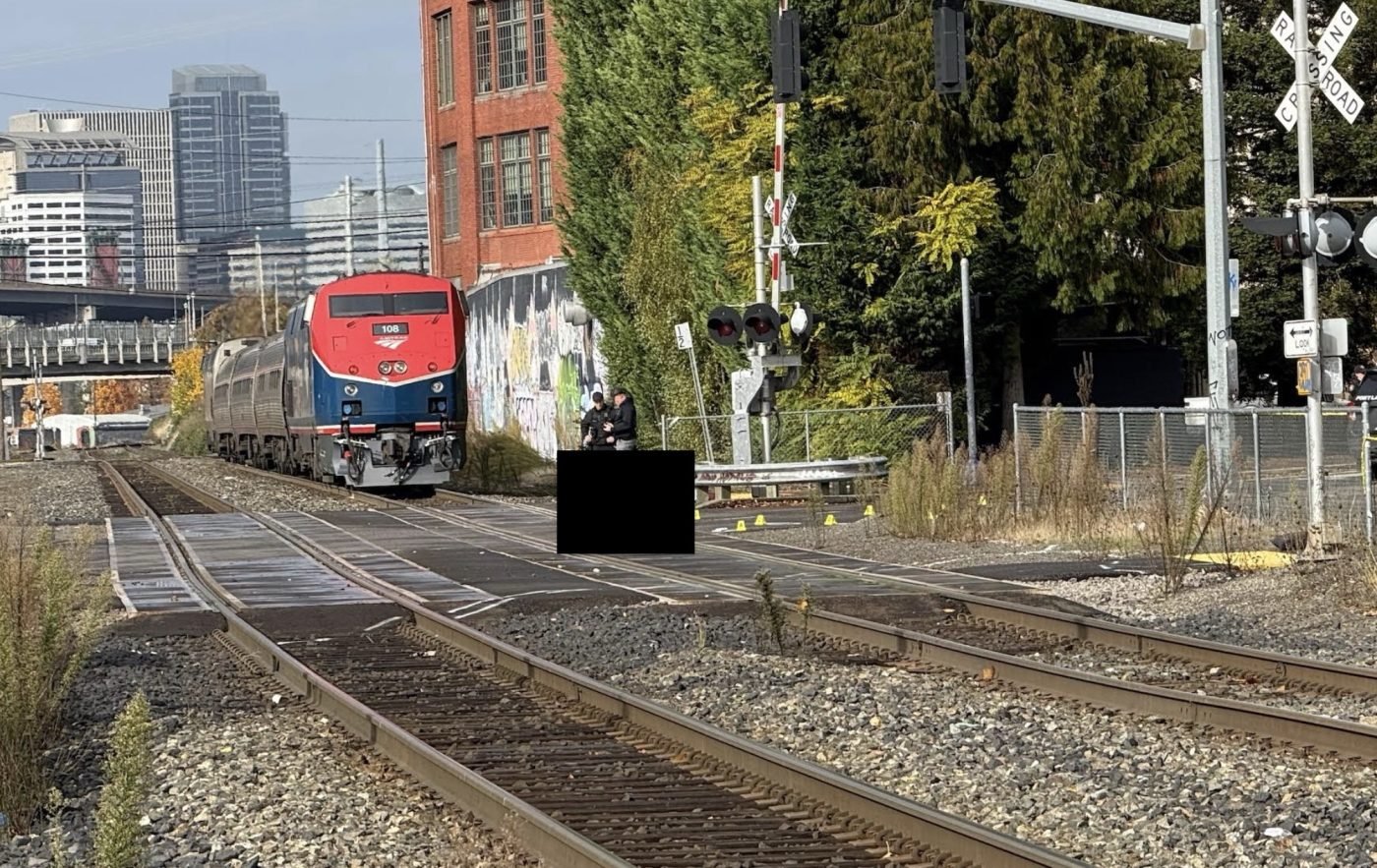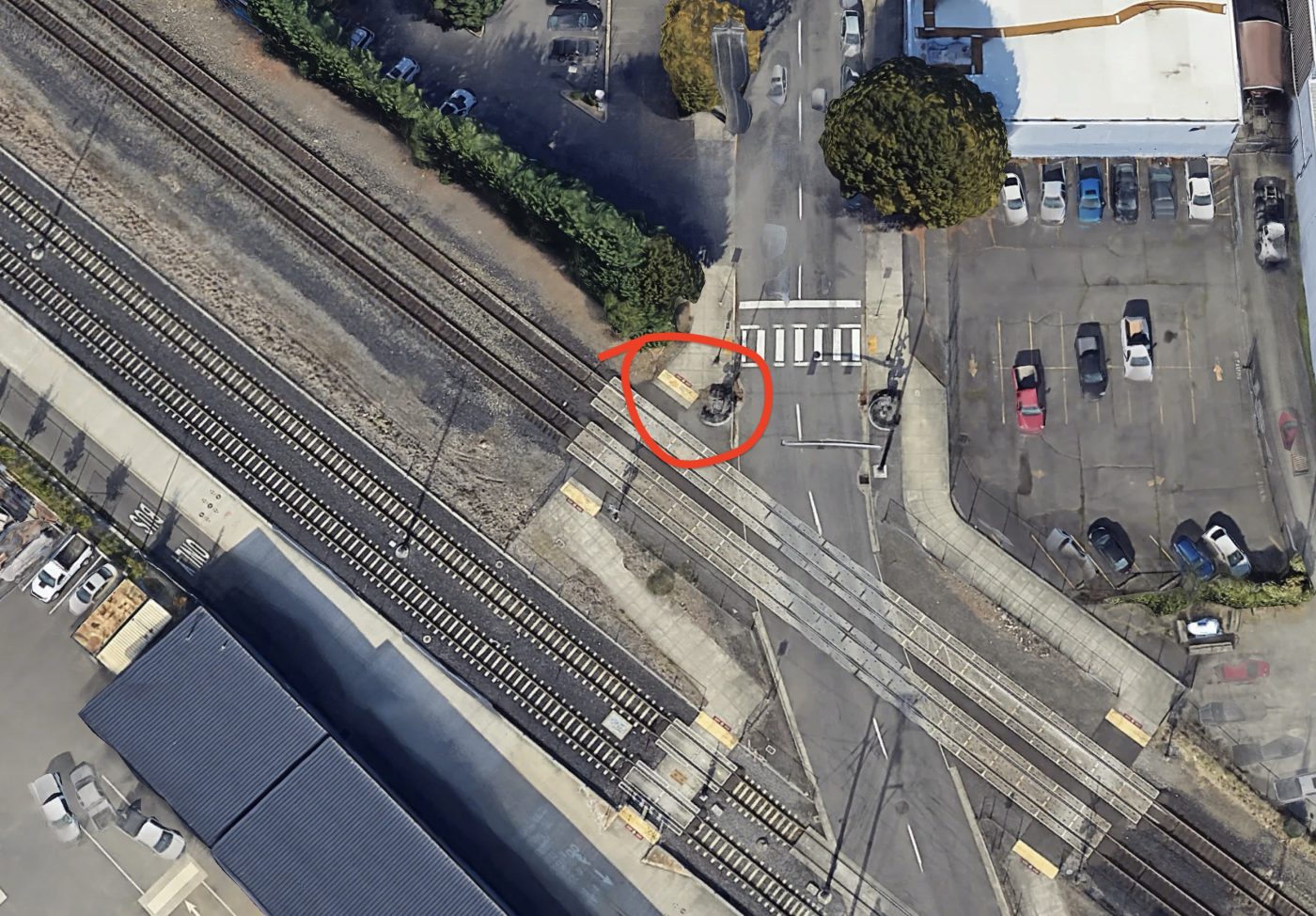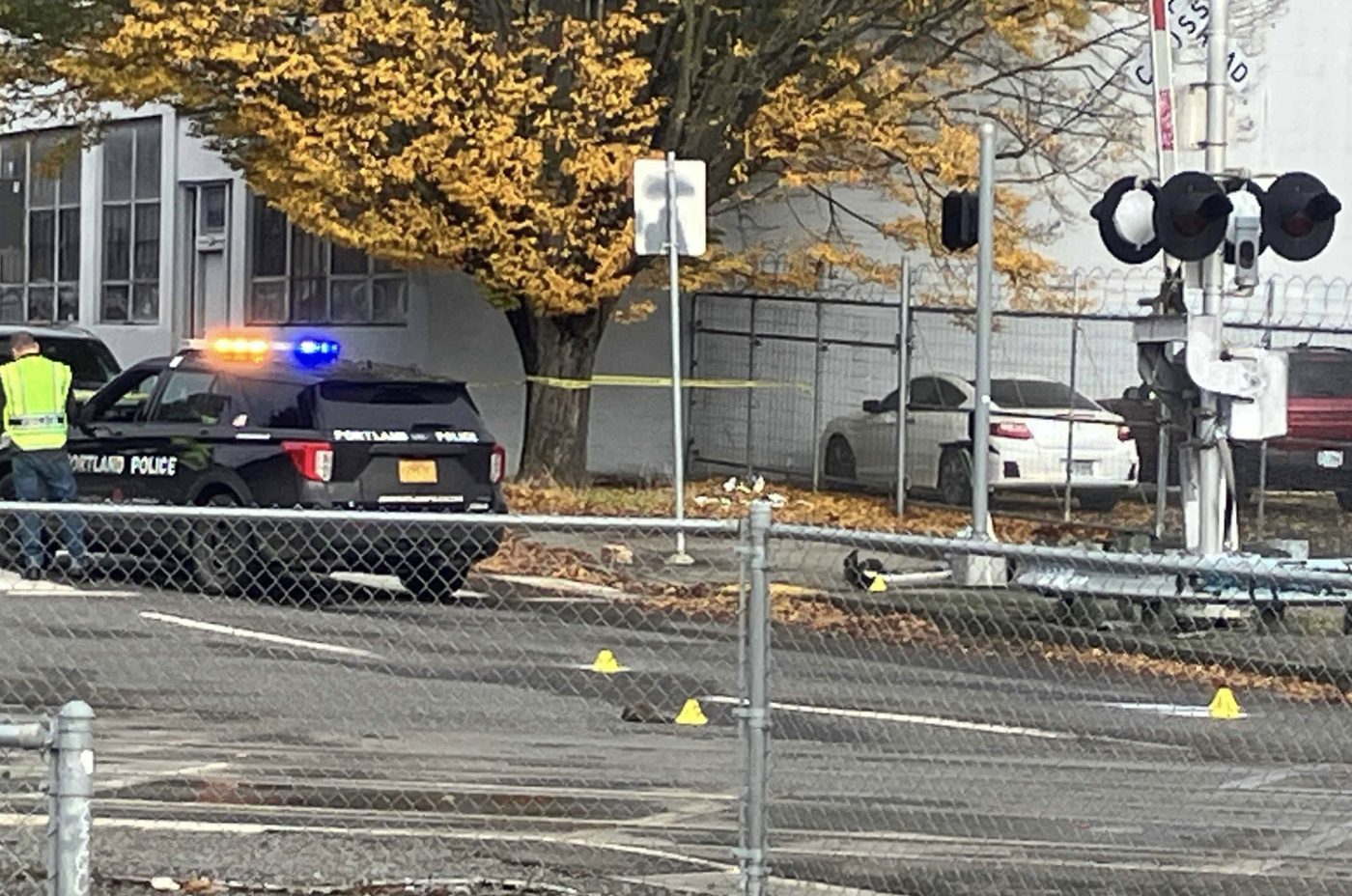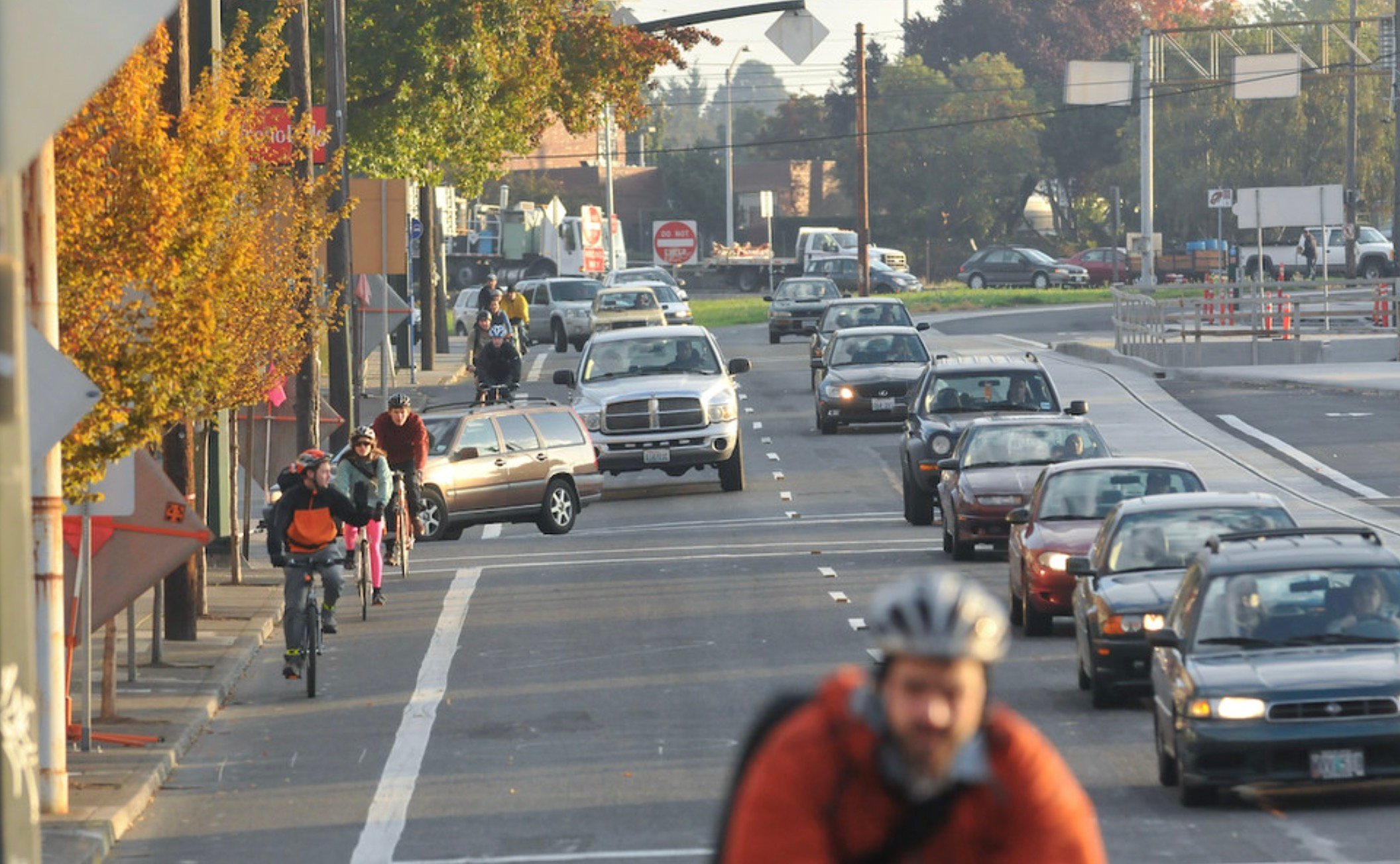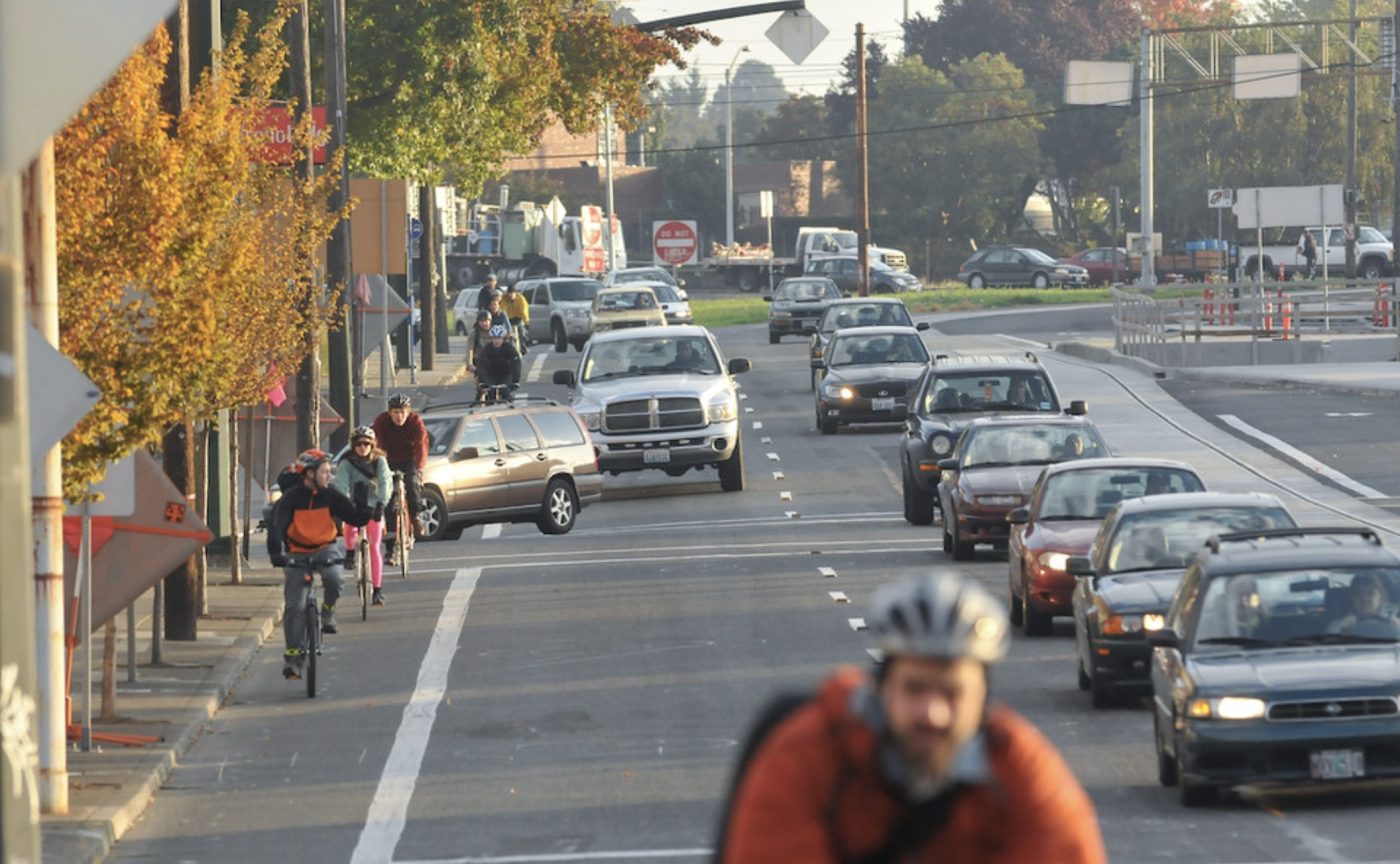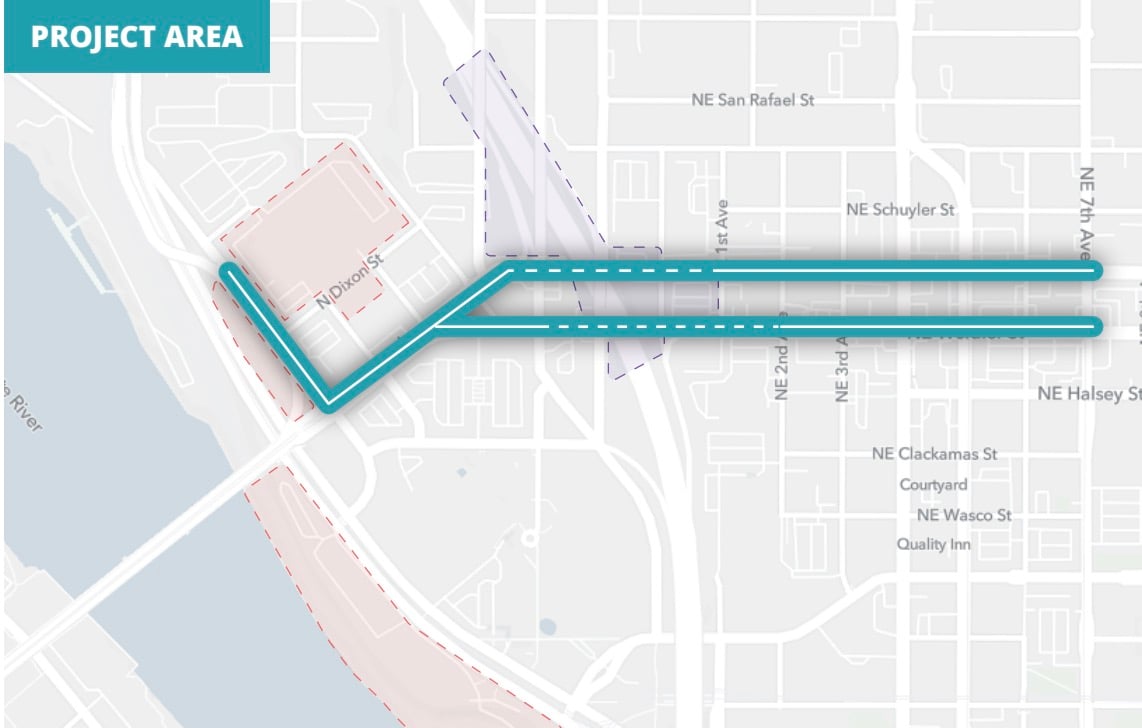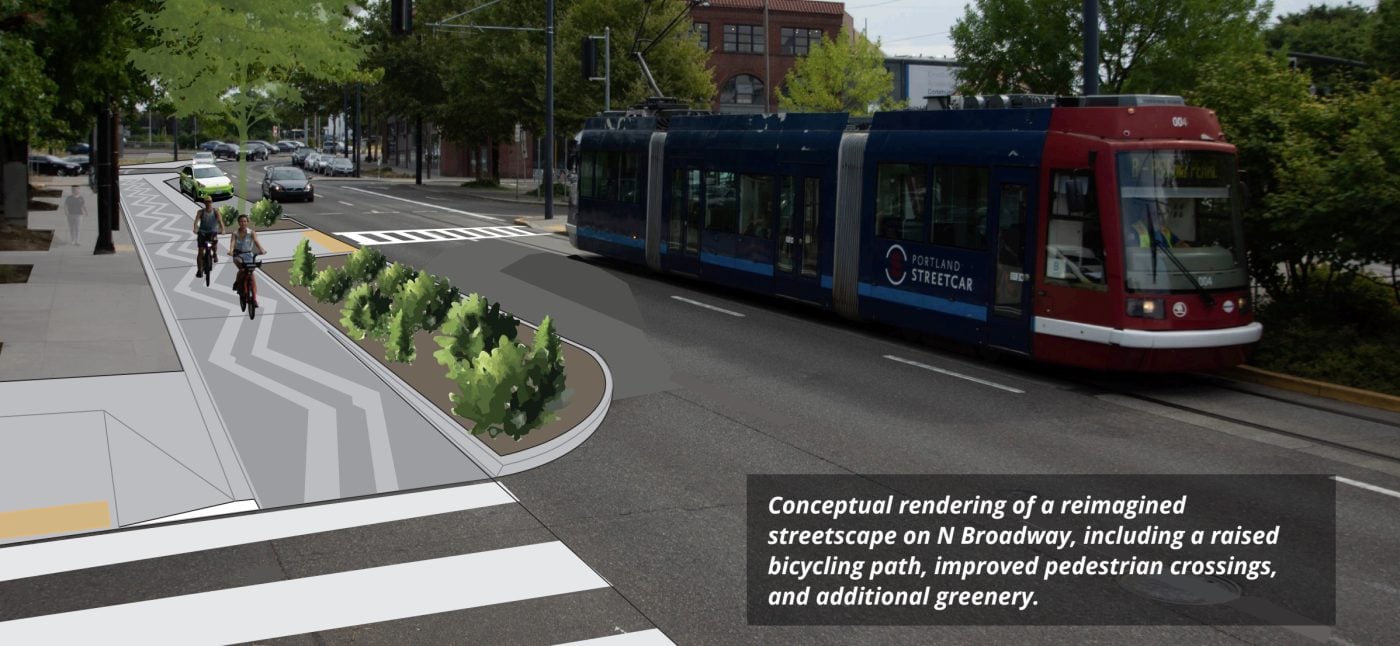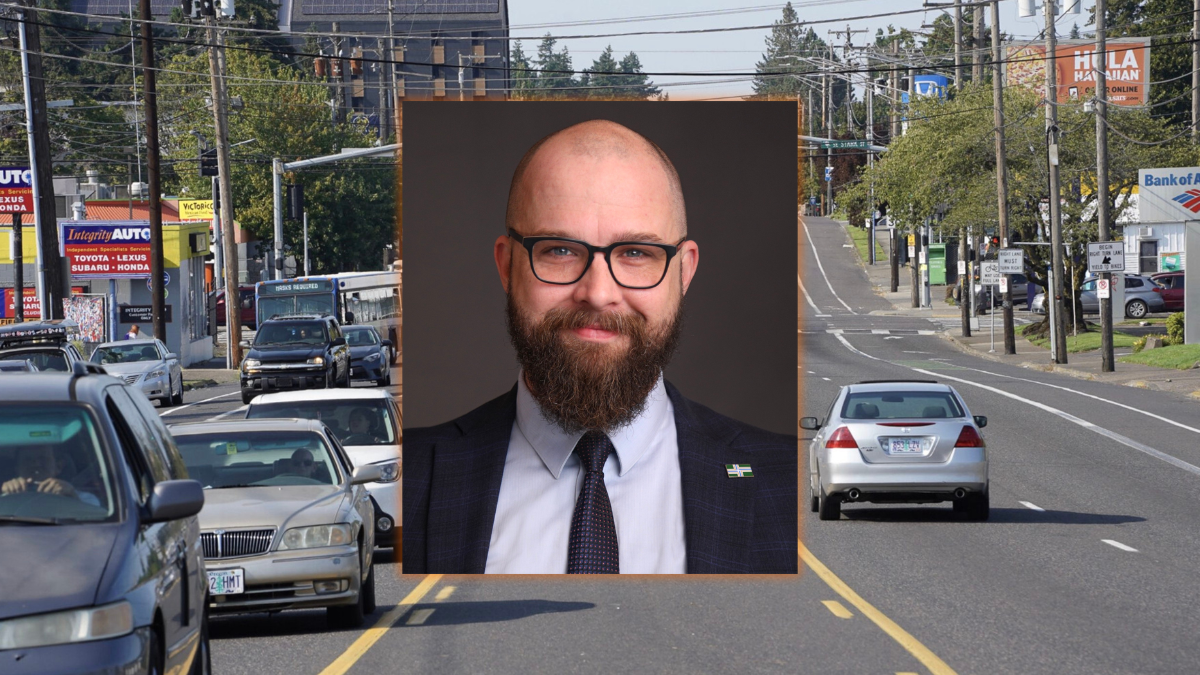
On October 29th, the unthinkable happened: three people were killed in three separate crashes in East Portland, all within just one mile of each other. The tragic night struck a nerve for District One City Councilor Jamie Dunphy, who shared a video on social media that expressed both sadness and indignation.
I talked to Dunphy on the phone today about those deaths, what he thinks will prevent them, and how they might influence his approach to transportation safety in the future. The following interview has been edited slightly for clarity.
Jonathan Maus/BikePortland:
How did you feel when you heard about those three fatalities?
Councilor Dunphy:
I was in the middle of a city council hearing and I opened up The Oregonian to find out about it. I was not independently told about any of this from the police or the transportation bureau, and it just literally stopped me in my tracks. I mean, we just finished talking about vision zero, and the for the city to be completely silent on the fact that within a two-and-a-half hour period, three neighbors were killed in a 20-block square radius. It was shocking.
There was no nobody in the city seeming to be paying attention to that. Nobody seemed to flag that, or maybe to have pointed it out to the councilors in charge. And it felt like such an aberration from what we would be expecting, that I was just shocked and heartbroken, and I felt compelled to say something.
It’s unbelievable that we’re at this point. I’ve walked those streets. I know the infrastructure there is piss-poor, and the visibility is terrible, and the way people drive on our streets is a complete disregard for human life. It is a failure of government. It is a failure of environmental design. It is a failure of individual behavior. It’s all of those things.
I wanted to just draw attention to the fact that there are consequences happening in our community.
To the mayor’s credit, and specifically to the director of PBOT director’s credit, they got some infrastructure out there. Well, not infrastructure. They got some signage. They got some light pole cameras. They got some some temporary lighting solutions within a few hours. They started putting things out to try and draw public attention to the fact that we’re approaching the dark season and daylight savings time, and the rain makes visibility worse for everybody, and that vision zero isn’t just about people crossing the street downtown or in, you know, inner Hawthorne area or some of the cooler parts of town — people are dying on the streets of East Portland, and it’s a failure by everyone.
Jonathan/BikePortland:
What is the infrastructure like on those streets in your district?
Councilor Dunphy:
These main thoroughfares — Holgate, Halsey, Glisan, Powell, Burnside, Foster, all of them — these are treated and built as four or five-lane highways. It is my firm belief that the federal infrastructure of I-84 is a failed piece of infrastructure. It has no on-ramps or off-ramps from 84 west for the entire length of the District One. And so people don’t have a way — and there are not enough family-wage jobs in District One — so everybody’s in their car and they’re trying to get downtown or out of the district, and they’re driving like crazy, and they’re trying to avoid traffic, and they drive insane.
And there’s wildly insufficient sidewalks. Even if we have the sidewalks at all, they are outdated in many ways. They are unsafe. They are affected by disuse and damage and tree branches and tree roots.
The few safety infrastructure upgrades that we do have, like what has happened to the traffic calming at outer Division Street, is leading to even worse behavior. People are literally flipping their cars when they’re trying to turn off of Division and hitting one of those concrete barrier things. That section of Glisan [where one of the people was killed] recently got some dedicated bike lanes. And you know, they’re not safe bike lanes. There’s not sufficient lighting there to actually make those bike lanes safe. There’s not sufficient lighting to make those crosswalks safe and walkable. And when you pair that with the lack of human infrastructure, the lack of public transportation and the failure of the city to address the homelessness crisis — especially around 122nd and Glisan — we have folks who are putting themselves into dangerous positions and drivers who are making those positions even worse. And it’s obvious the outcome there is going to be a collision, and the pedestrians and the bike riders will always lose that.
The infrastructure in East Portland is not designed for the people who are living there. It is designed to get people and freight through it, and it shows. And it’s crazy. It’s 100 years of disinvestment materializing, right?
Jonathan/BikePortland:
I hear what you’re saying. You’re listing all the reasons why I think a lot of people feel like the issue, especially in East Portland, is overwhelming. It’s hard to know where to start. That being said, what happened that night is unprecedented. Has it changed you? Has it changed the way you want to advocate for transportation safety on city council?
Councilor Dunphy:
I wouldn’t say it has changed me. It has made it clear to me how much more acute and urgent the problem is, and how it is intertwined with all of the other things that we are working on. I was one of the key co-sponsors of the vision zero work at the city, but that was sort of high-level, and clearly was, you know, fancy words without a lot of follow through. And I hate that. I hate performative nonsense and it’s clear that the city’s work on vision zero hasn’t been serious. It hasn’t been effective.
It also drove home for me that, as we are talking about homelessness, we have to talk about transportation infrastructure. As we are talking about economic development, we have to talk about transportation infrastructure. We will never meet our climate goals if we don’t talk about getting good jobs in East Portland because everybody’s trapped in their single car and having to drive that district. We will never reduce the deaths on the streets of folks who are sleeping outside, if they are also getting hit by cars, if we are putting human lives in the same physical built space as vehicles, if people are sleeping in tents on streets and don’t have a place to be safe and they don’t have sufficient sidewalks, of course, that is going to lead to direct conflict with vehicles.
No, I didn’t change, it just drives home for me that infrastructure and the built environment are core to almost all the rest of our goals that we are trying to accomplish.
Jonathan/BikePortland:
What you said earlier tells me that, in some ways, you’re happy with what the mayor, city administrator, Portland Police Bureau, and PBOT did as an immediate response. Is there anything else ongoing in terms of something more substantial? For instance, when Sarah Pliner was was killed over on Southeast Powell, there was a listening session at the school. There were commitments from ODOT to do something about it. Is there anything like that in terms of follow-up from those folks that you mentioned in your Instagram video? Is anyone in your office reaching out to them? Or was the message board sign PBOT put up (with “Traffic Death Here – Use Caution”) enough of a response?
Councilor Dunphy:
No, that cannot be the response, putting up a sign and saying, ‘Traffic death, slow down,’ or whatever it said. That can’t be the response we need. I’ve asked specifically for the traffic engineers and the PBOT infrastructure folks to come up with a plan for improving some of the deficiencies on that stretch. Specifically, I want better lighting. I want to see what we can do in terms of actual division between where the vehicles go and where bikes and pedestrians go, some sort of physical median.
And I think to some extent, some of this is also bad behavior by drivers that we’re not seeing enforcement on. Every single day I see people running red lights or doing enormous amounts of speeding. I think we can demonstrate to the public that we have a social contract we need to be following, and we have actual laws that we need to be following, and that there are consequences for not following those laws. We need to be intentional about it also being the built environment.
I’m not interested in having a community listening session and envisioning what neighbors want to see — neighbors have told us what they want to see. They want to have their kids walk home from school safely. We know that. We know what these solutions are. And we see that infrastructure spending benefiting other parts of the city. We don’t see it benefiting East Portland.
[Dunphy then explained how he recently received a district-by-district breakdown of Parks and PBOT investment. He cited an example of a promise to spend $6 million on street sweeping, but worried that in places without sidewalks, PBOT won’t sweep because there’s no curb. “That doesn’t mean you don’t come sweep my neighborhood,” he said. “My neighbors still deserve beautification. So I want to see where that where those dollars are being spent and my team is actively looking at the report and asking for some follow-up on it.”]
Jonathan/BikePortland:
You mentioned the built environment and you’ve laid out the problem. It often comes down to the incongruity of fast moving vehicles being operated near where people live, work and play. And there’s an obvious way to prevent that, which is to make it impossible to travel at such high speeds. But that often comes down to a political question: Are you willing to support a project that creates more friction for drivers, makes driving more difficult, slower, and less convenient as a trade-off to making roads safer? Would you support a design solution that included things like narrowing the street, or chicanes? The design solutions are there. They’re obvious. They’re in use all over the world. But would you support them?
Councilor Dunphy:
I think absolutely. Especially in the obvious high crash corridors and areas where we know those conflicts are happening. I mean, it’s obvious: We can demonstrate it. It’s Sandy, right? It’s Glisan. It’s Burnside, Powell, it’s Division. We know where those are. The way the traffic calming has gone on outer Division doesn’t seem like it has reduced the levels of pedestrian and bicycle conflict, compared to the level of undertaking it took to change the built environment. I’m absolutely open to that; but it also has to come with more reasons to keep people from getting into their car, and it has to come with something I’m specifically working on: how do we attract better jobs so people don’t have to get into their cars in the first place? I’m supportive of additional mass transit and for trying to make it less convenient to drive and more convenient to take a bus. We’re seeing the opposite from TriMet, we’re seeing some service pullback. We’re not seeing service levels in East Portland of transit ridership at the same level that we see in other parts of the city. It’s one of those things where they say, ‘Well, nobody’s doing it, so we have to cut back.’ And when you cut back, nobody’s going to use it. But yeah, I think the built environment needs to change.
Jonathan/BikePortland:
The problems that you mentioned — getting people more housing, improving transit — those could take a long time to do. Meanwhile, three people were killed in one night. So, I would just ask you again: If there was something put on the table that said, ‘This is a crisis of public safety, and we’re going to do some things with this street that are going to dramatically slow it down. You might not be able to turn left here. You might not be able to make a u-turn there.’ Would you be willing to face your constituents and try to help them understand why that’s necessary, even if it doesn’t come with a fix to their housing or transit needs?
Councilor Dunphy:
I wouldn’t be supportive right now of what the city previously did with Division. That was sort of a broad brush when trying to address something that I think was done in a ham-handed way. We have clear data about where these pinch points are and these are the places where people are colliding — so yes, absolutely, make those areas safer through the built environment and that specifically means making it less convenient to drive. Not on every major thoroughfare, because I think that ultimately that is going to just make it that much harder to live in East Portland right now. But I think if we did it in a way that was specific and targeted and data-informed, absolutely.
Jonathan/BikePortland:
I’ve been saying for many years that, while they’re spending a lot of money, PBOT is not doing projects in East Portland that will actually move the needle for safety. Some projects might start off strong, but are too compromised by politics and pushback once they hit the ground. So then the activists are not happy and the drivers are mad because they feel like there’s money being spent on stuff they don’t care about. So everybody’s pissed.
Councilor Dunphy:
There is a school of thought that is prominent in city hall — especially under the old form of government and those who have followed us over from it — that if everybody is angry, then you’re probably doing good politics and I think that’s absolutely bullshit.
Jonathan/BikePortland:
As an elected official, you have to be comfortable with who you’ve made mad, because not everybody’s anger should be valued the same. And I know that’s tricky, but it’s up to you as an elected to understand who you should not want angry, versus who it’s okay to make angry.
Councilor Dunphy:
This job is hard, but it’s supposed to be hard. And these decisions are supposed to be controversial, because if they were easy, they would have been made before it got to my desk. And so it requires a level of bravery that, candidly, I don’t think most of the people have had who’ve been elected to city council in the past. I don’t care if it makes people angry if I’m saving lives. My top priority should be that everybody gets home safe tonight.
My [13-year-old] daughter walks to middle school in Parkrose and does not have an option of walking on sidewalks the entire way. And while it’s getting better in places, I just want to know that when she’s walking home from her classes after five o’clock when it’s dark, that she’s not going to die. And I think that’s a basic thing and I am willing to take on a certain level of pushback in the name of saving lives.
Jonathan/BikePortland:
Is there anything else you want folks to know regarding your feelings about all this?
Councilor Dunphy:
I want people to slow the fuck down. Just stop driving so damn fast. I got a little bit of pushback from folks saying, ‘You know, this is not an individual problem. This is a collective, social problem.’ And I agree. And it is also an individual problem. It is a responsibility for us all to fix it; but also, people need to take responsibility. To take responsibility in their vehicles and drive differently.
Jonathan/BikePortland:
Do you plan to attend the World Day of Remembrance event coming up on Sunday?
Councilor Dunphy:
Yes, I’ll be there. I’m speaking too.
— For more on World Day of Remembrance, which coming up this Sunday (11/16) from 11:00 to 12 noon at Luuwit View Park at NE 127th and Fremont, visit the event website.


